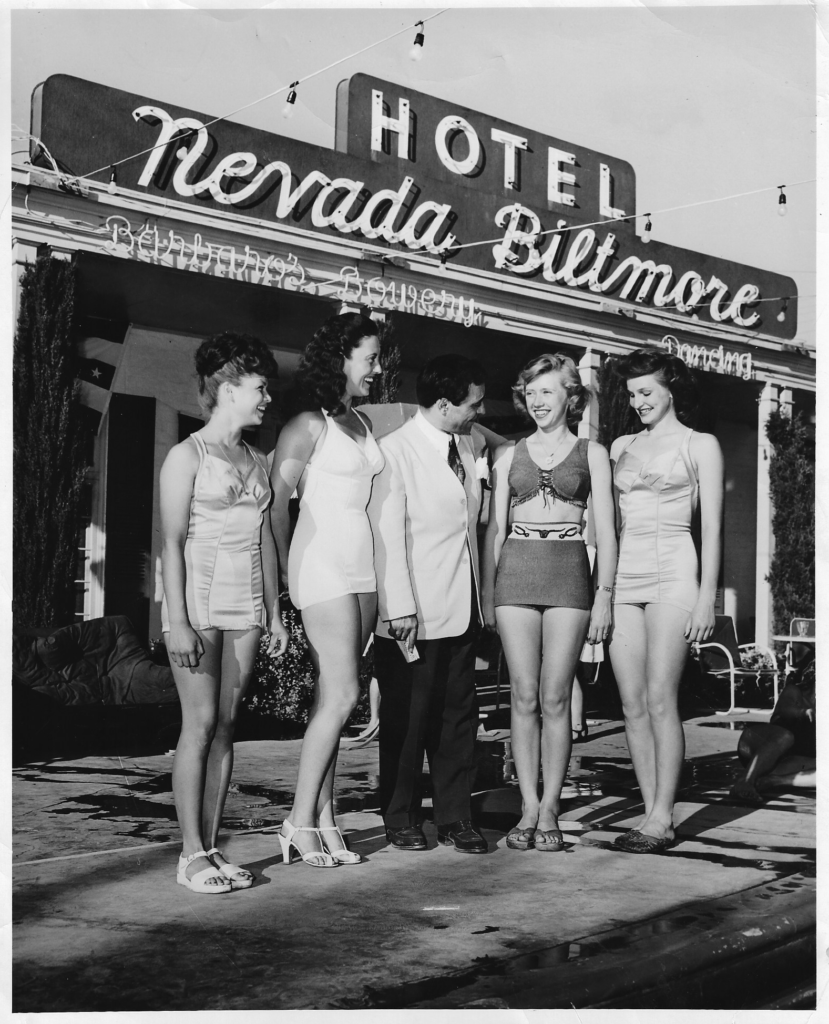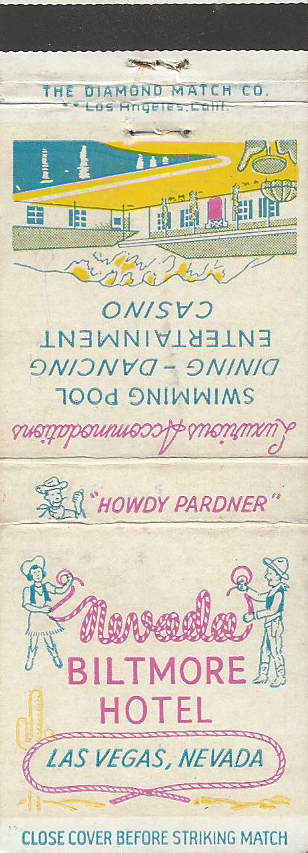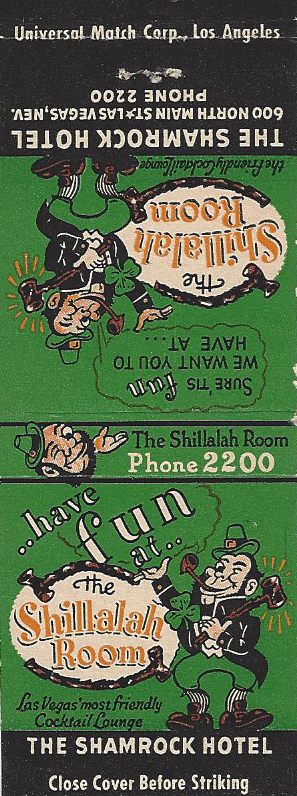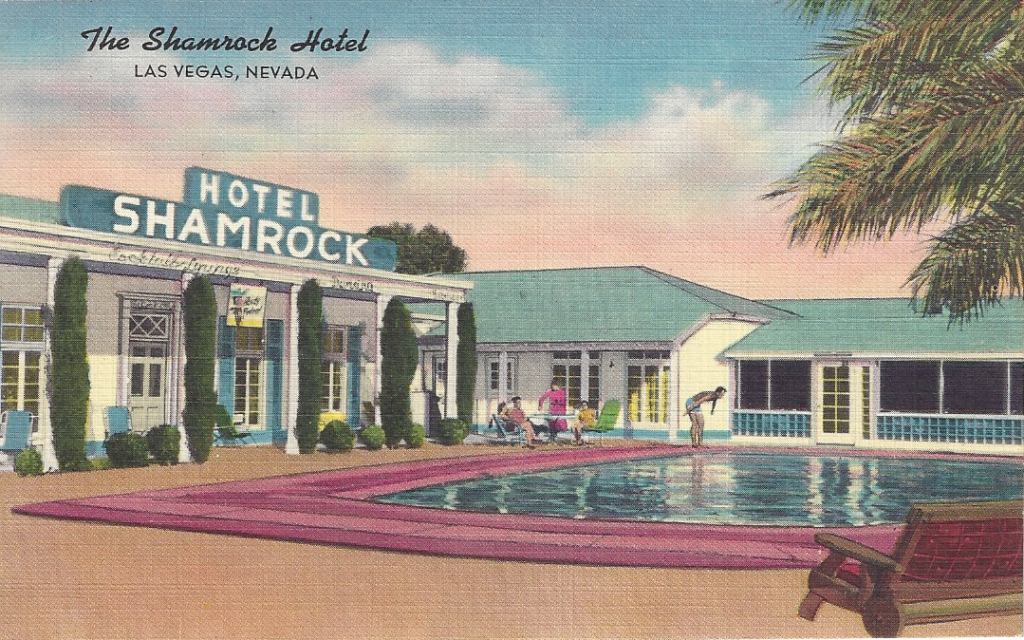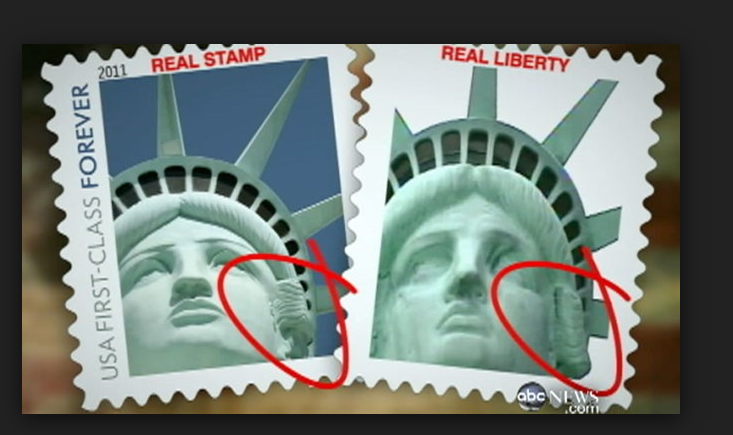Bobbe Lithographic Company,
Post Cards of Southern Nevada.
“Three trains is a Crowd”
Delayed in Caliente, Nevada on September 3, 1915, by a train wreck, William spent time at John Shier’s Drug Store located just up the street from the train depot.
He bought several post cards of Caliente published by Shier.
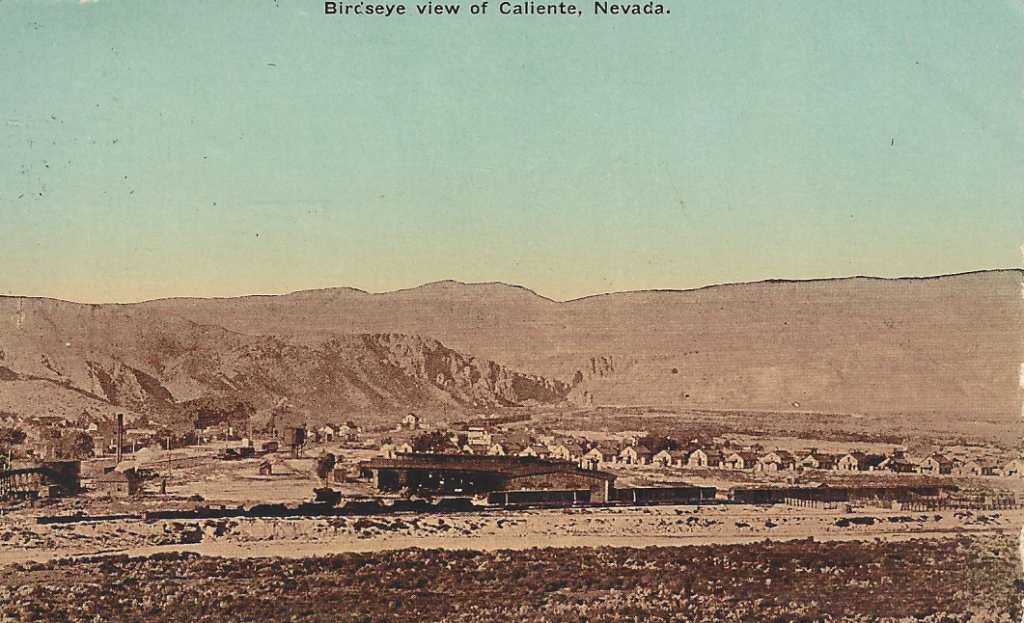
On one card William wrote a friend in Massachusetts “held here on account of a washout.” He dropped his post card at the Caliente Post Office.
William then headed back to the depot to get a status report on his train which was headed to California.
He found out the wreck occurred halfway between Caliente and Las Vegas.
William wrote “we are tied up here today. We have been here since two o‘clock last night and this is in the afternoon. The train ahead of us went into the ditch. We don’t known when we will go. But I suppose tonight three trains here so you know it’s a crowd.”
William, the pessimist, dated his post card 9-4-15. He deposited his post card at the Caliente railroad depot. Soon after he mailed his card the train left the station heading to Los Angeles. William’s post card is postmarked Ogden & Los Angles R.P.O. TR 2 Sept. 3, 1915.
The first post card, the one he dropped off at the post office, did not make it on the train until the next day. It is postmarked “Caliente, Nev. Sep 4, 1915.”
When the delayed trains, heading south, made it to the spot of the wreckage, a newspaper reported “the passengers beheld a locomotive almost buried in the sand. It had left the track when it hit the washout, but the passenger train behind it was not wrecked.”[i]
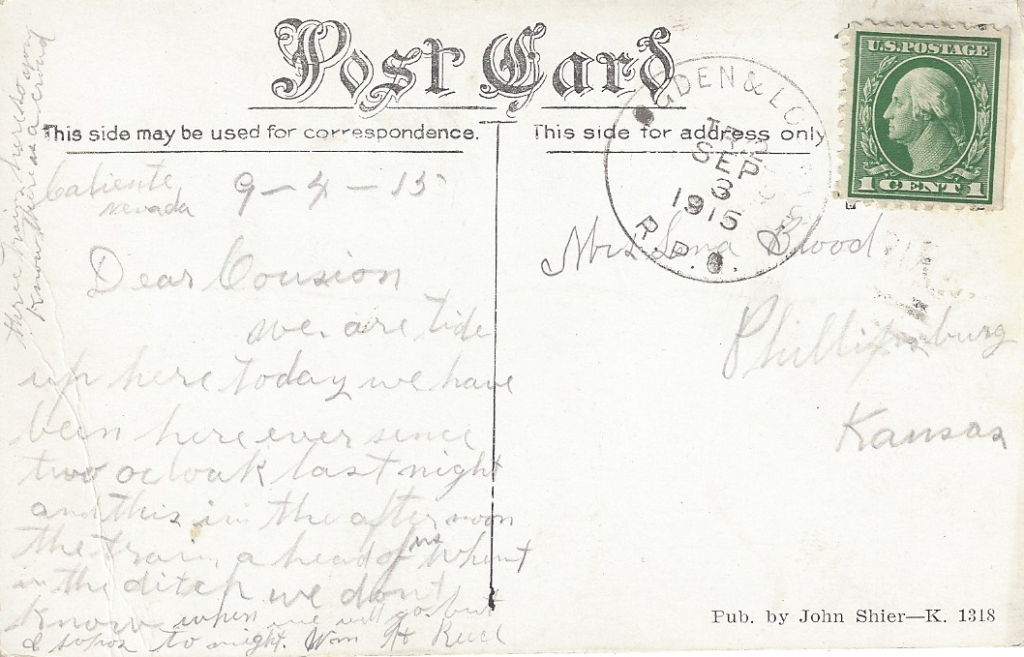
While the backs of the post cards William in Caliente bought are the same used by the Bobbe Litho Company of New York, there is no credit line on the back other than “Pub. by John Shier –K. 1318.”
In addition to the back design, the type of font used for the caption, Bobbe also used the letter K to identify its post cards.
The color printing process is the same one used by Bobbe. For example see Bobbe Litho K430 Caliente.
It is likely the post cards at Shier’s drug store had been on the rack for several years, and it is also likely they were printed by Bobbe’s former partner M. S. Kraus.
The Bobbe Lithographic Company’s connection to Nevada
The Bobbe Litho Company connection to Nevada started five years earlier when it announced plans to begin selling post cards directly to retailers. [ii]
In addition to Shier in Caliente, a retailer in Las Vegas responded to Bobbe’s news business plan. Both retailers would order post cards that would mark key historic event.
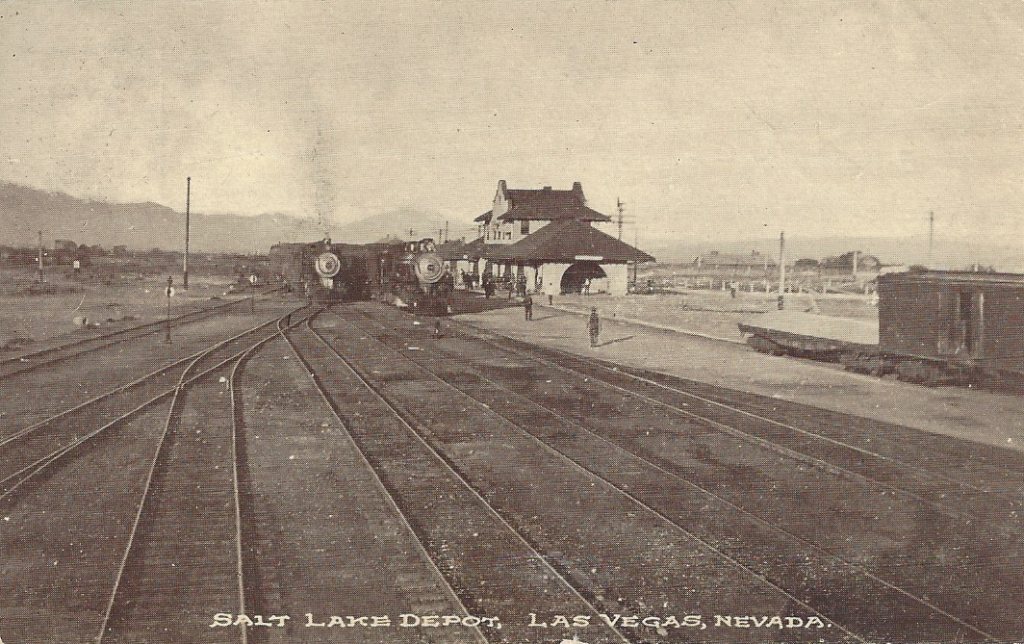
Note, this post card from Bobbe Litho and printed for the Wilson Drug Company of Las Vegas used an Albertype post card Wilson had published earlier. Bobbe Litho not only copied the image, the company simply used the Albertype post card, including the original caption.
What Bobbe Litho did block out, just to the left of the tracks in the left-hand corner is where the Wilson Drug Company credit line was found on the Albertype post cards.
It is clear where the credit line was blocked out when you compare the two post cards.
In Caliente it was drug store owner Shier who sent in an order. He soon received the shipment of post cards, despite limited communication with the outside world.
Caliente was one of the main Nevada stations on the San Pedro, Los Angeles, and Salt Lake Railroad, now the Union Pacific, that ran between California and Utah.
A massive storm hit southern Nevada on New Year’s Eve, 1909, knocking out more than 100 miles of the railroad with Caliente almost in the middle. It took nearly six months to completely re-open the rail line.
Mail and supplies were brought in by wagon from Pioche, twenty-five miles north of Caliente.
Shier was clearly one of the first to order printed post cards of the event. He used Bobbe as he received his post cards in early April, 1910. The earliest known Bobbe card post mark Caliente, April 27, 1910 a month before the rail line reopened.
When the railroad line reopened in mid-June 1910, John Shier’s drug store had a ready supply of storm related post cards.
It was Bobbe’s March announcement that caught Shier’s attention. The price was right and he didn’t have to order thousands of post cards. He also he knew there would be a demand for post cards once the rail line reopened.
Up to that date Bobbe Litho, which both manufactured and imported post cards, primarily sold only to wholesalers.[iii]
Bobbe’s move was the result of action by the Federal Government.
With the approval by the President and the U.S. Congress of the Payne-Aldrich Tariff Act of 1909, the U.S. post card industry was looking at an uncertain future.
In late 1909 Bobbe was looking for a new revenue stream.
With his partner and longtime friend, Maurice Albert Kraus, they made a decision and sent out an press release to a target audience; drug stores.
Several trade magazines including The Pharmaceutical Era, the American Druggist and Pharmaceutical Record, and the Canadian Druggist printed the announcement.
The company’s press release modestly described itself as making “a bold move…best explained in the words of S. Bobbe, the well-known lithographer, whose plants in American and Holland are world renowned.”
Before the new tariff on post cards from Europe wholesalers around United States had stocked up on post cards. Wholesale prices dropped, and Bobbe said the situation was “very sad indeed.”
To this point in time Bobbe said he had kept his companies post card work quiet; “We have sunk our identity for many years” by “printing other names on them as publishers.” [iv]
Now he said the post card part of his company was going public with a new sales plan; “we find that our post card business is best conserved by direct contact with the retailer.”
Bobbe’s enticement to the small shop owners was financial. The company announcement, said it was sending out a catalogue with prices so “low as to give the dealer the benefit of the jobbers’ profits and the salesman’s commissions.” [v]
Not only would be wholesale price be attractive, Bobbe said his company had “perfected a glazed view which our foreign house formerly made and we now make them equally.”
Bobbe went on to compare his cards to the ‘real photo’ post cards. He said his post cards have “a photo finish that far excels many of the photographic views cards that are sold throughout the country.” [vi]
Bobbe’s announcements included another inducement for small retailers, he sell his postcards “in lots of 500” and would “deliver views in two weeks’ time.” [vii]
Two southern Nevada drug stores, one in Las Vegas and Shier’s in Caliente responded to the offer.
Bobbe and Kraus knew each other for more than 30 years
In addition to being his partner and friend, M. Albert Kraus was Bobbe’s naturalization sponsor. [viii]
Bobbe arrived in the United States from England in September of 1876. He was sixteen.
On October 15, 1885 he became a citizen of the United States. A year later he listed his occupation as “bookbinder.”[ix]
By 1910, Bobbe had become one of Kraus’ partners, along with Simon Goodman in the Kraus Manufacturing Company, a printing house in New York.[x]
Despite orders from Caliente and Las Vegas as well as responses from retailers around the country, including Lake Tahoe, this was Bobbe last known post card effort.
Kraus Continues on in the Post Card world
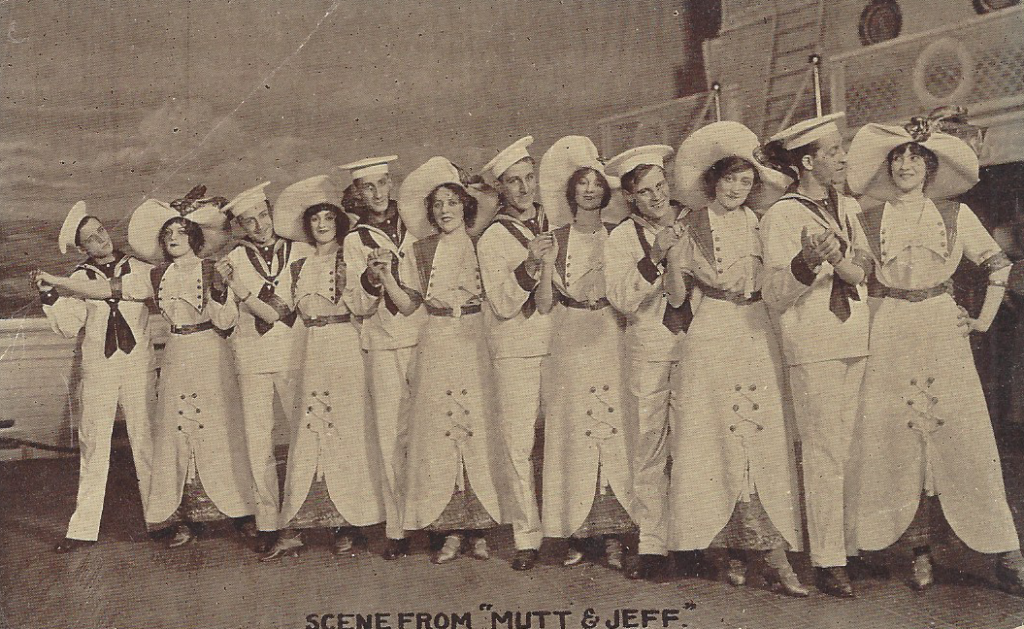
Kraus Post Card for Broadway show “Mutt & Jeff” 1911-1912. Has Kraus back, not Bobbe.
Kraus on the other hand, using the same back found on the Bobbe post cards, would print at least one Nevada post card, and would go on to create post cards for both silent film stars and Broadway shows. Kraus’ credit line would often appear on the backs of his post cards he created.
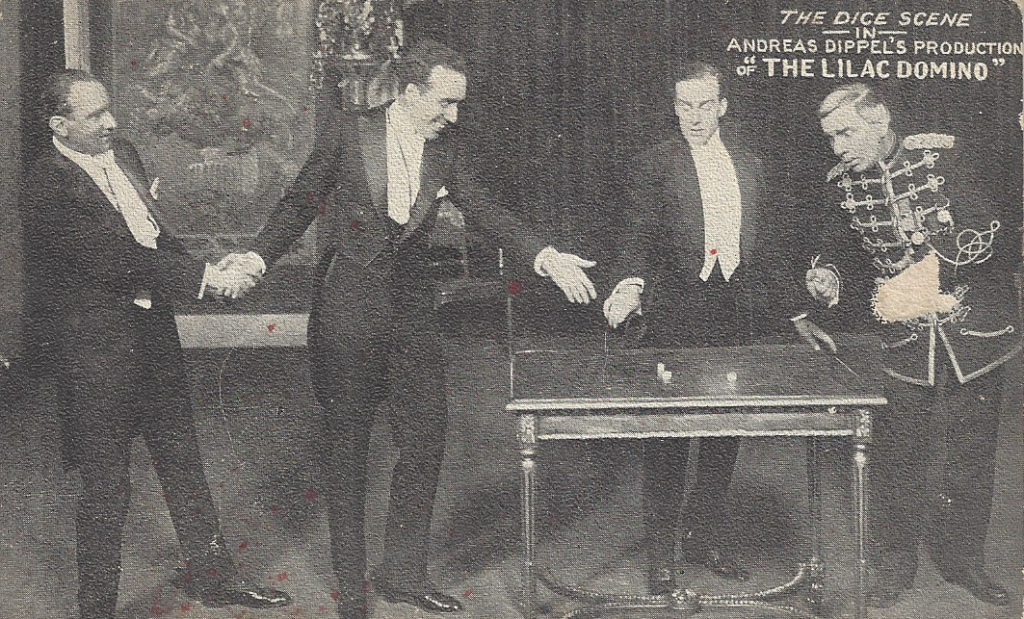
“The Lilac Domino” opened on Broadway October 28, 1914. Post card published by Kraus, with Bobbe back.
Caliente, John Shier Las Vegas, Warren Wilson
Shier and Warren Wilson of Las Vegas, owned and operated the major stores in southern Nevada.
Shier had been a drug store owner and operator in the south-east part of Nevada for several decades..
Starting in Pioche in 1880 he opened “Shier’s Hesperian Drug Store.”[xi] By 1894 he had moved to De Lamar, Nevada and had set up shop as a “pharmacist.” His new operation was called the “Prescription Drug Store.”
In 2012, a 5 1/8 inch tall bottle from his De Lamar drug store sold for $1,000. [xii]
When the railroad was built between Salt Lake City and Los Angeles the town of Calientes, with an “s” was created. As De Lamar would soon turn unto a ghost town Shier opened the Caliente Drug Store.
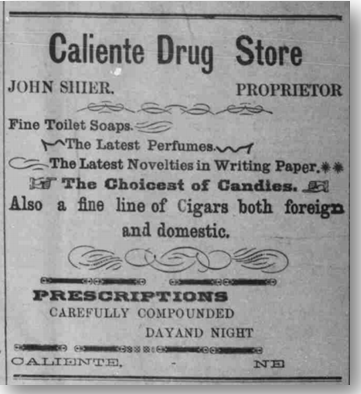
Front page advertisement in July 27, 1906 issue of
The Pioche Weekly Record
Shier, originally from Ringwood, Hampshire, England was 62-years-old when he ordered post cards from Bobbe in 1910.
A few months after receiving is post cards from Bobbe, Shier announced his plans to run for the Nevada Assembly representing Lincoln County.[xiii] Two decades earlier he had served in the Nevada Legislature.
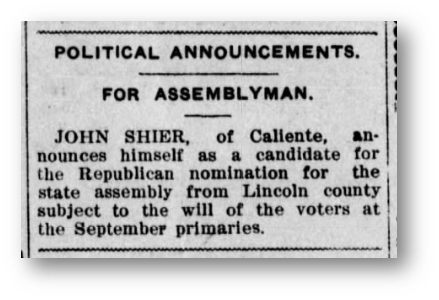
Late in 1910, after the rail line had been restored Shier, and Charles Squires, publisher of the Las Vegas Age newspaper were named in to the Platform Committee, of the Nevada State Republican Party.[xiv]
Not likely the two men discussed Bobbe post cards. Although, Squires did use Bobbe post cards to promote his campaign for the Nevada Legislature representing Clark County.
The Squires state senate campaign mailers are the first known use of post cards in a Las Vegas election.
Both Shier and Squires made it to the November general election. Both lost.
Wilson Drug Store – Las Vegas
In Las Vegas, Warren Wilson had just turned 22 years old when he moved to Nevada in 1906. [xv]
He would soon become part owner and managed the only drug store in Clark County new county seat, Las Vegas. [xvi]
Wilson’s drug store was located on the first floor of the building located on the North West corner of First and Fremont Street.
Wilson Drug Store Las Vegas. Albertype Post Card ca. 1910
It is likely Wilson ordered post cards from Bobbe Litho early in 1907.
Two post cards, without captions, and only with the credit line “Pub. by Wilson Drug Co.” were printed in 1907.
While Bobbe Litho’s name does not appear on the post card, the printing company is identified by the back design as the one the printing company used.
It would be several years before Wilson used Bobbe Litho again, and based on images and post cards, it appears the New York City company likely printed the first and last post cards for Wilson
While Wilson used several post card publishers while he operated the drug store, his company of choice was Albertype of Brooklyn, New York. He used Albertype starting 1907, as did his processor.
Wilson was sick most of 1910 and was either in the hospital or at home recovering.
In mid-March of 1910, the news hit; “New Drug Store.” The newspaper reported “Las Vegas is to have another business house on Fremont Street. The name of the new enterprise is the Las Vegas Drug Company. The store will be neatly fitted up and will be ready for business within the coming week. In addition to drugs the concern will carry a stock of optical goods and jewelry.”[xvii]
The store, which specialized in “eye glasses, eyes examined, glasses made and repaired,” also started selling real photo post cards of southern Nevada.[xviii]
Within days of the new drug store opening, Wilson became “quite ill” and was “confined to his house”[xix] After being “confined to the house by illness for over a week,” Wilson was sent to Los Angeles, and “will stay in the southland some time for recuperation.” Neither Las Vegas newspaper, while reporting on the Wilson’s illness many times, every mentioned the exact nature of his illness.
At the end of April 1910 the Age reported that Wilson, after being confined to a “California hospital for several days, he is now able to be out.”[xx]
Several weeks later, Wilson after a “sojourn of several weeks returns much improved in his health, and is once more attending to business at the drug store.”[xxi]
It is during this period Wilson probably ordered as many as ten different views of Las Vegas from Bobbe.
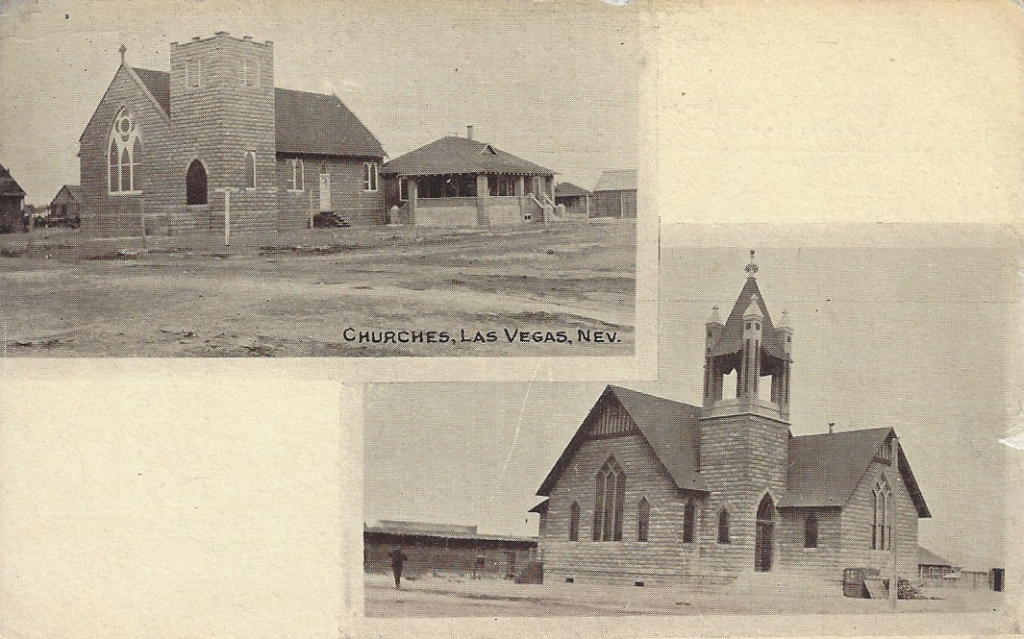
Whatever was causing Wilson’s ill health, it hit again 60 days later. The public was informed at the end of July their primary pharmacist “has been ill for a week past, went to Los Angeles. It is hoped that the change of climate and rest from business will soon restore him to health.”[xxii]
He returned a month later, “much improved in health and spirit from his sojourn in Los Angeles.”[xxiii]
Wilson’s “spirit” did not last long. Less than 30 days later he called it quits. His mysterious malady was given for his departure. One report said that “Mr. Wilson has been in ill health for the past year, and on this account felt the need of a change, and will take a much needed rest on the coast.” The headline to the story simply said Wilson “Disposes of Drug Business.”[xxiv]
Within weeks, the new owner and a new name for the business was announced. “E.S. Wharton, of Rhyolite has purchased the interest of W. B. Wilson in the Wilson Drug Company and will assume the management of the business. He has a large stock of goods at Rhyolite which will be moved here and combined with the stock of the local store.”[xxv]
The Wilson Drug Store became the Wharton Drug Store. Like Wilson, Wharton ordered his Las Vegas post cards from Albertype. However, Wharton never placed an order with Bobbe.
Bobbe Nevada Post Cards 1910-1911
The Bobbe post cards were likely produced over a one year period beginning in the spring of 1910. The dates of printing and likely re-orders, are based on Bobbe’s announcement, postmarks and the images and titles of the Nevada post cards.
It is possible that Shier placed an order for a panoramic view of Caliente in 1914. A post card with a Bobbe Shier back, with only a “Pub by John Shier –K1318” is known to exist with the title “Birdseye View of Caliente, Nevada.”
Known Postmarks.
- Caliente, Nevada, April 27, 1910.
- Caliente, Nevada, June 20, 1910.
- Caliente, Nevada, July 12, 1910.
- Las Vegas, Nevada August 30, 1910 A.M.
- Los Angeles, California, September 10, 1910
- Caliente, November 6, 1910.
- Las Vegas, Nevada, November 11, 1910.
- Las Vegas, Nevada, February 16, 1911.
- Caliente, March 1, 1911
- Caliente, Nevada, April 11, 1911.
- Caliente, May 10, 1911.
- Las Vegas, November 11, 1910.
- Caliente, Nevada, June 26, 1911.
- Las Vegas, Nevada, June 29, 1911 A.M.
- Las Vegas, July 6, 1911.
- Las Vegas, Nevada, August 3, 1911
- Las Vegas, September 21, 1911.
- Las Vegas, October 2, 1911.
- Las Vegas, December 16, 1911.
- Caliente, July 1, 1914.
- L. City & Los Angeles, TR 2 R.P.O. June 30, 1914
- Caliente, Nevada, August 5, 1915.
- Caliente, Nevada, August 20, 1915
- Ogden & Los Angeles, R.P.O, September 3, 1915
- Caliente, Nevada, September 4, 1915.
Bobbe Post Card Backs
There are two known Bobbe backs on Calientes and Las Vegas post cards.
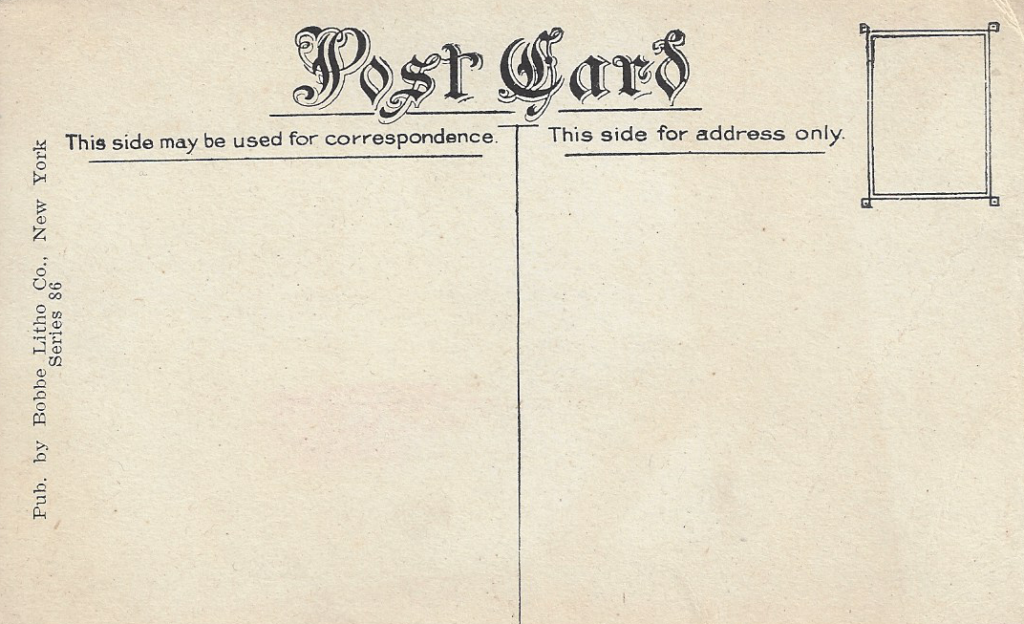
Bobbe Litho Back Version One
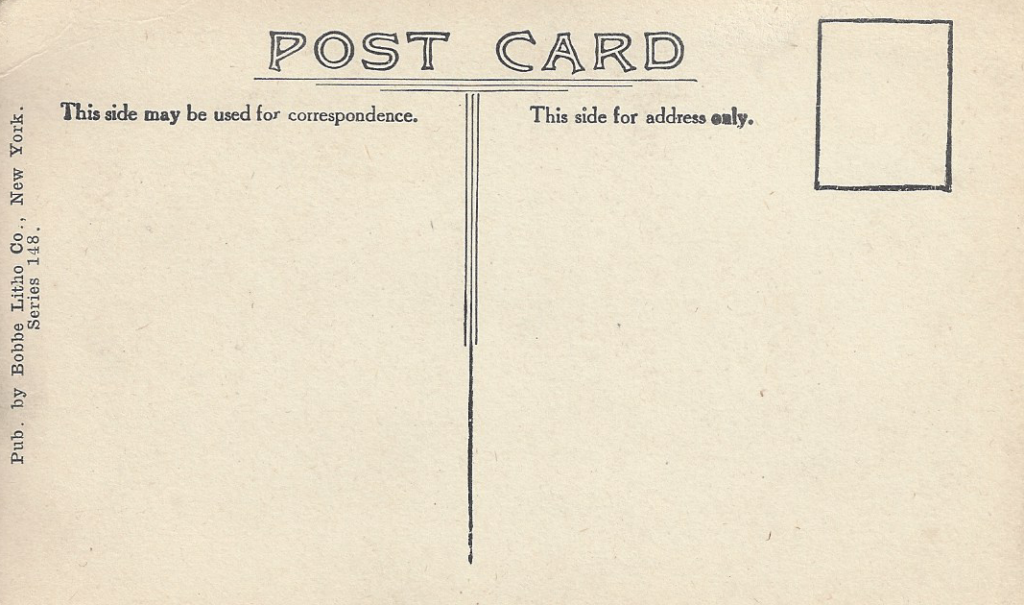
Bobbe Litho Back Version Two
Check List of known Bobbe Litho Nevada Post Cards
Caliente
Series 86, Also reissued as Series 140
This is a vertical card with three views damaged railroad tracks from the storm of 1910. Each of the three images has its own title.
- There are two horizontal views on the face of the card and one vertical view.
- Horizontal “Caliente, Nev.” Shows twisted railroad tracks.
- Vertical view “Two Miles above Caliente.” Shows more twisted tracks.
- Horizontal “One & One Half Miles above Caliente.” Shows washed out track and trestle
- No publisher listed. Earliest known postmark is Caliente, April 27, 1910.
- This same view was produced under Bobbe’s Series 140. Version 2 of the back was used. Possibly a re-order of a popular post card.
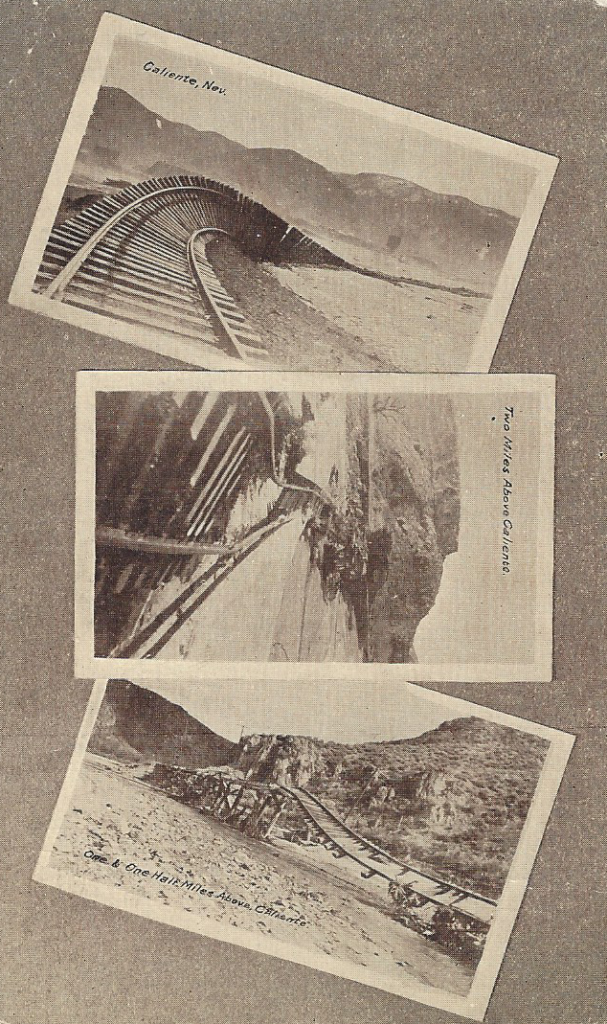
Series 95
Title is “MAIN STREET, CALIENTE, NEV.”
- This is a black and white view look south from the west side of the tracks towards the business section of town and the depot.
- Earliest known postmark is June 12, 1910. Published for John Shier.
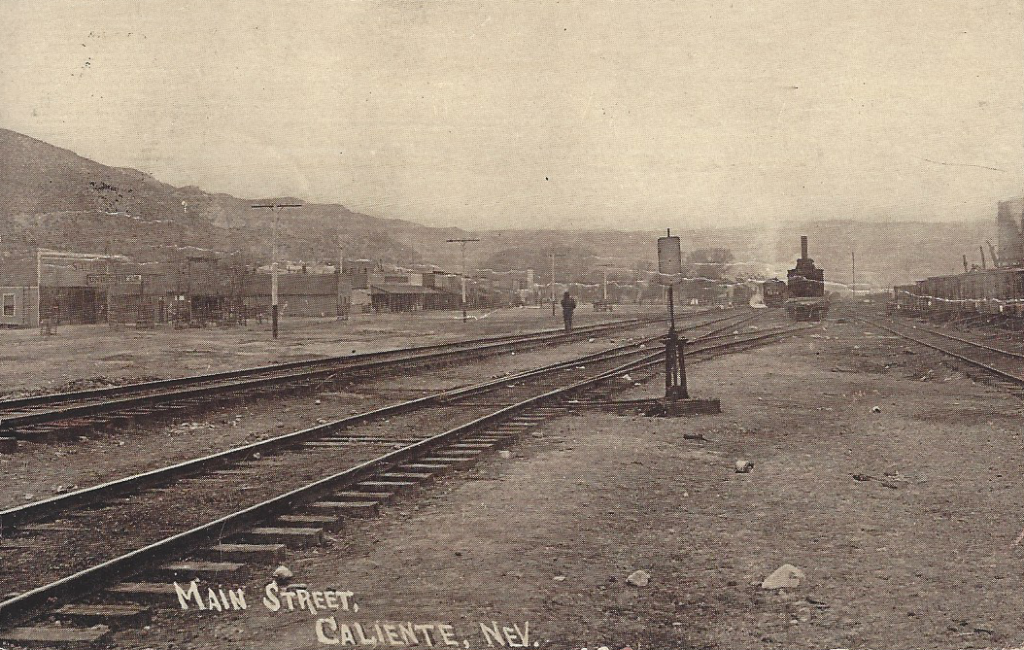
Series 148
A multi view post card of Caliente. Each view has a title within the image.
- “FRONT VIEW OF COMPANY HOUSES, CALIENTE, NEV.”
- “SAW MILL CANYON, HIGH BRIDGE EAST OF BIG SPRINGS ELEVEN MILES EAST OF CALIENTE”
- “BRIDGE (TURNED OVER) 20 MILES WEST OF CALIENTE”
- The images on the post card appear on post cards printed earlier by other publishers..
Series K.205
Title, “Caliente, Nevada, 1910”
- This post card was issued with three different Bobbe Litho numbers,
- 205
- 238
- 1042
- All three have the same back.
- All three post cards were “Pub. By Bobbe Litho Co., New York City for John Shier.”
- Shier’s name is misspelled ‘Ghier’ on the first issue, K.205.
- On the last print run, K.1042 a small water pond lower right has been colored in.
Series K 430
This card, is titled “Caliente, Nevada.”
- The view shows the town and mountains in the distance from an almost ‘birds-eye’ view.
- A light green color was added to the sky, a brown to the desert and a dark grey to the town.
- “Pub. By Bobbe Litho Co., N.Y. for John Shier”
Series K 1296
- A vertical post card with two images of Caliente.
- Each image has its own title; “Main St. Caliente, Nev.,” and “Depot, Caliente, Nev.” and “Round House,” and “Across the track, Caliente, Nevada
- Published for “John Shier” by Bobbe.
- A vertical post card with two images of Caliente.
- Each image has its own title; MAIN ST. CALIENTE, NEV.,” and ‘DEPOT, CALIENTE NEV.” However, the second view shows seven men standing at the front of a steam engine number 19.
Bobbe backs, but no Bobbe credit line.
One has the credit line “Pub. By Kraus Mfg. Co., N.Y.” the other card with the same back has a credit line “Pub. By John Shier- K1318.”
Based on the backs, the “K” number, it is likely that Kraus purchased Bobbe sometime between 1911 and 1914.
K 1318
- This is a color post card titled “Birdseye view of Caliente, Nevada.”
- The colors are identical to those found in K430 “Caliente, Nevada.”
- Published by John Shier
- Earliest postmark is July 1, 1914.
No number. Kraus Mfg. Company.
- The title is “Caliente, Nevada.”
- This post card has the credit line “Pub. By Kraus Mfg. Co., N. Y.”
- This is a view of the business district next to the tracks on the depot side of the railroad.
- The earliest known postmark is December 14, 1916.
- The post card has an early Bobbe Litho post card back.
Check List of Bobbe Las Vegas
Post Cards
Series 140
Another post card printed by Bobbe records an important moment in Las Vegas’ history.
In 1910, Charles P. Squires, who owned and operated the Las Vegas Age, one of communities two weekly newspapers campaigned for the office of State Senator representing Clark County.
In February of 199, the Las Vegas Review-Journal published a series of articles on historic Las Vegas figures. The late journalist K.J. Evans wrote, “If there is any individual who deserves the title “The Father of Las Vegas,” it is Charles Pember Squires, a native of Austin, Minn., who spent more than 50 years here, building, boosting and ballyhooing his city. Fellow citizens who knew him during that time in Las Vegas greeted him with the sobriquet of “Pop,” and his wife, Delphine, as “Mom.”[xxvi]
As part of his 1910 campaign, Squires sent out post cards in the primary election seeking the Republican nomination.
He used a Series 140 post card from Bobbe Lithographic Company titled “Views at Las Vegas, Nev.”.
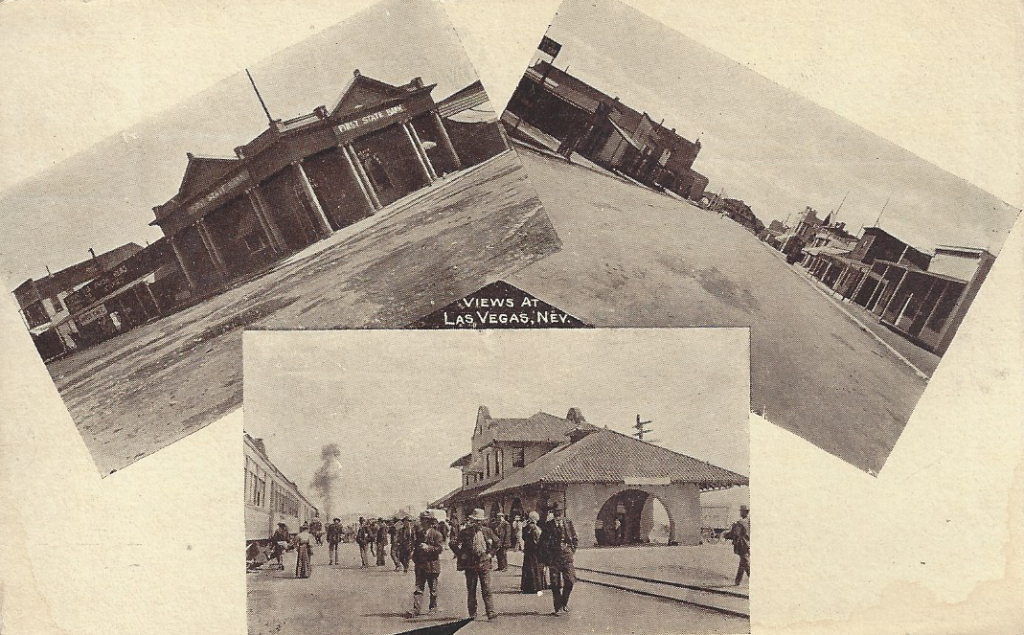
The multi view has three images, the Salt Lake Route railroad depot, Fremont Street looking west, and an image of the First State Bank.
On the back of the card, most mailed in August, before the September primary, Squires printed “Dear Sir: I am asking the republicans for the nomination for State Senator. I believe I am the man you want. If you think so too, your vote at the primaries will be appreciated as a personal favor. I have the interests of the County deeply at heart, as you may know through my paper, The Las Vegas Age, and will esteem it a high honor to represent you. Yours Very truly, Chas. P. Squires.”
The card was addressed “Dear Sir,” as women were not allowed to vote in 1910.
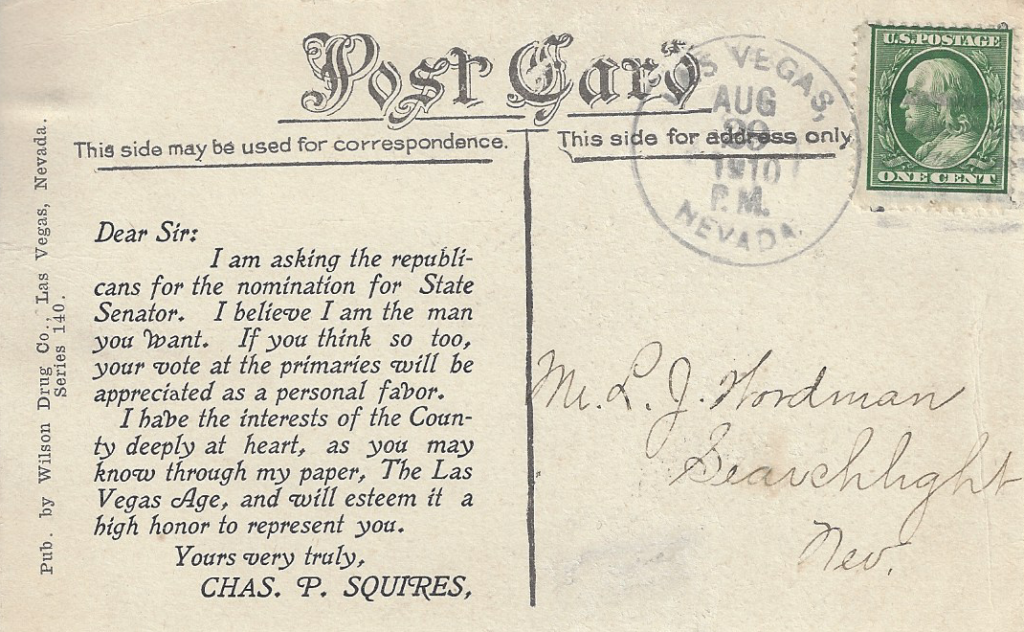
Other Bobbe Series 140 Las Vegas Post Cards.
The 140 Series use a Bobbe Litho post card back, and series number, but Bobbe does not have a credit line on the back, only “Pub. by Wilson Drug Co., Las Vegas, Nevada.”
Title
- “VIEWS OF LAS VEGAS NEV.” In a small triangle in the center of the post card.
This post card has three untitled views on the face of the card.
- The First State Bank building.
- The railroad depot
- Fremont Street look west from Second Street.
Earliest known postmark, Apr. 30, 1910.
- “DESERT SCENES LAS VEGAS, NEV.” In a small triangle in the center of the post card.
There are three views on the face of this post card.
- Two men on horses with three pack mules loaded with prospecting Equipment. The Newman Post printed this same view for Wilson Card Company, card 2, titled “On the Desert, Las Vegas, Nevada.”
- A view of two dozen burros, near a creek, with Sunrise Mountain in the background. The same view was printed for Wilson by the Albertype Company of New York, and titled, “Burros, Stewart Ranch, Las Vegas, Nevada.”
- This is a view of seven burros with backpacks, with what looks like Frenchman’s Mountain in the background. Earliest known postmark is September 10, 1910- Los Angeles, California.
- “CHURCHES, LAS VEGAS, NEV.”
This post card has the separate views of the two churches in Las Vegas in 1910-1911.
Earliest known postmark is July 6, 1911 – Las Vegas.
- “CATHOLIC CHAPEL, LAS VEGAS, NEV.”
Earliest known postmark Feb 16, 1911- Las Vegas.
- “SALT LAKE DEPT. LAS VEGAS, NEVADA.”
Note, different font used for title, and Nevada not abbreviated.
Series 166 and Series 1004
Both the Series 166 and 1004 have credit lines “Pub by Bobbe Litho. Co., New York City,” and “For Wilson Drug Co.” on the back.
- “CATERPILLAR OF NEVADA,” SANDSTONE CO., LAS VEGAS, NEV.
Earliest known postmark is November 11, 1910- Las Vegas.
Series 1004
- “SCENE ON CLARK & RONNOW RANCH. LAS VEGAS, NEV.”
- “FIELD ON CLARK & RONNOW RANCH. LAS VEGAS, NEV.”
Earliest known post mark is October, 1920-Las Vegas.
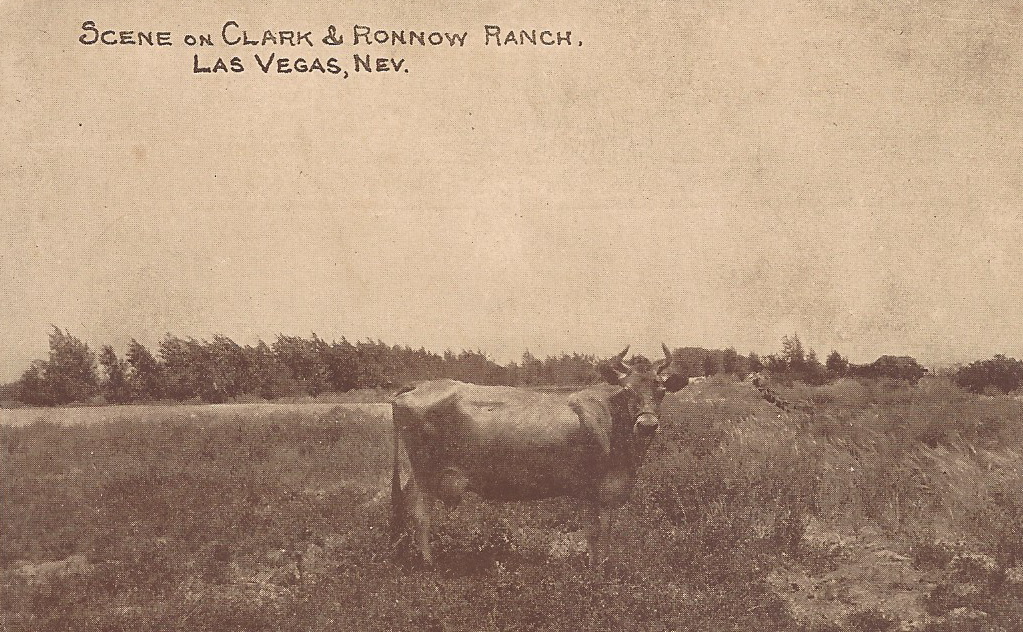
The Clark & Ronnow Ranch were front page news in April of 1910. The Las Vegas Age reported on April 30 in a story titled “Paradise Valley,” “Where less than two ears ago was only the gray of the desert may now be seen…little bunches of greenery.” the story went on to say there were “several acres of sugar cane,” as well as corn, and barley” and Clark and Ronnow said “we have 480 acres of land…of this we will probably have 120 acres under cultivation by the end of the season.” The story ended with the note the Clark and Ronnow Ranch provides an example of why “it is little wonder that the Vegas valley is receiving much attention.” It is possible the story and the publishing of the post cards of the ranch was part of a marketing effort to sell land in Las Vegas.
How many post cards of southern Nevada were produced by Bobbe-Kraus?
It is likely the Bobbe Lithographic Company of New York City, New York printed more than twenty different card images of southern Nevada in 1910.
There are nine known Bobbe cards of Caliente, and 8 of Las Vegas. Included in the known total of seventeen post cards are 9 multi view cards. There are a total of eighteen views on the 9 multi view cards.
It is possible the images on the multi view cards were also produced as individual view cards.
For example an untitled three image multi view card of the 1910 New Year’s track washout in Meadows Valley contains three titled views; A card titled “Caliente, Nev” that shows only twisted railroad tracks, a view titled “Two Miles Above Caliente,” that shows more twisted railroad tracks, and a third view titled “One & One Half Miles Above Caliente,” that shows track and a washed out trestle.
On the other hand three image multi-view cards tilted “VIEWS OF LAS VEGAS, NEV.” Shows views that had already been released as individual cards by other post cards producers.
No Bobbe post cards from other parts of Nevada have been uncovered. There are known Bobbe post cards from the California side of Lake Tahoe.
Footnotes
[i] “Marooned Artists Give Charity Show,” September 6, 1915, The Salt Lake Tribune, page 8.
[ii] “Bobbe Litho Co. to Sell Director to Dealers,” March 1910, “The Pharmaceutical Era, magazine, New York, Page 292.
[iii] “Bobbe Litho Co. to Sell Director to Dealers,” March 1910, “The Pharmaceutical Era, magazine, New York, Page 292.
[iv] “Direct to the Retailer,” March 1910, The Canadian Druggist magazine, Toronto, Canada, Page 175. “The Retailer Gets the Bottom Line,” June 27, 1910, American Druggist and Pharmaceutical Record, Page A 24.
[v] “Bobbe Litho Co. to Sell Director to Dealers,” March 1910, “The Pharmaceutical Era, magazine, New York, Page 292.
[vi] “Direct to the Retailer,” March 1910, The Canadian Druggist magazine, Toronto, Canada, Page 175. “The Retailer Gets the Bottom Line,” June 27, 1910, American Druggist and Pharmaceutical Record, Page A 24.
[vii] “Bobbe Litho Co. to Sell Director to Dealers,” March 1910, “The Pharmaceutical Era, magazine, New York, Page 292.
[viii] “Co-partnership and Corporation Directory of the City of New York,” March 1910, Trow Directory, Printing & Bookbinding Company, New York, Page 93.
[ix] “Throw’s New York City Directory,” May 1, 1886, The Grow City Directory Company, New York, Page 167. “Petitions for Naturalization” New York City, Samuel Bobbe, Records of the District Court, 1685-2009, Record group Number, RG21.
[x] “Co-partnership and Corporation Directory of City of New York, March 1910, Trow directory, Printing & Bookbinding Company, New York, Page 449.
[xi] Display advertisement for Shier’s Hesperian Drug Store, June 21, 1890, The Pioche, Nevada Record, page 4.
[xii] http://www.icollector.com/John-Shier-Bottle-NV-Delamar-Lincoln-County-c1894-1903-2012aug-Nevada-Bottles_i13391032
[xiii] “Political Announcement,” July 23, 1910, The Pioche Nevada Record, page 4.
[xiv] “Republican Party stands United in Convention,” September 28, 2910, Reno Evening Gazette, page 2.
[xv] Las Vegas Age, November 11, 1906
[xvi] “Thomas Block Leased, November 24, 1906, Las Vegas Age, page 1.
[xvii]. “New Drug Store,” March 18, 1910, page 1.
[xviii]. Clark County Review, June 11, 1910, page 6
[xix]. Clark County Review, April 16, 1910, page 6
[xx]. Las Vegas Age, April 30, 1910, page 5.
[xxi]. Clark County Review, May 21, 1910, page 6
[xxii]. Las Vegas Age, July 32, 1910, page 5
[xxiv].. “Disposes of Drug Business,” January 21, 1911, Las Vegas Age, page one..
[xxv]. “Local Notes,” March 11, 1911, Las Vegas Age, page 5.
[xxvi] https://www.reviewjournal.com/news/c-p-squires/
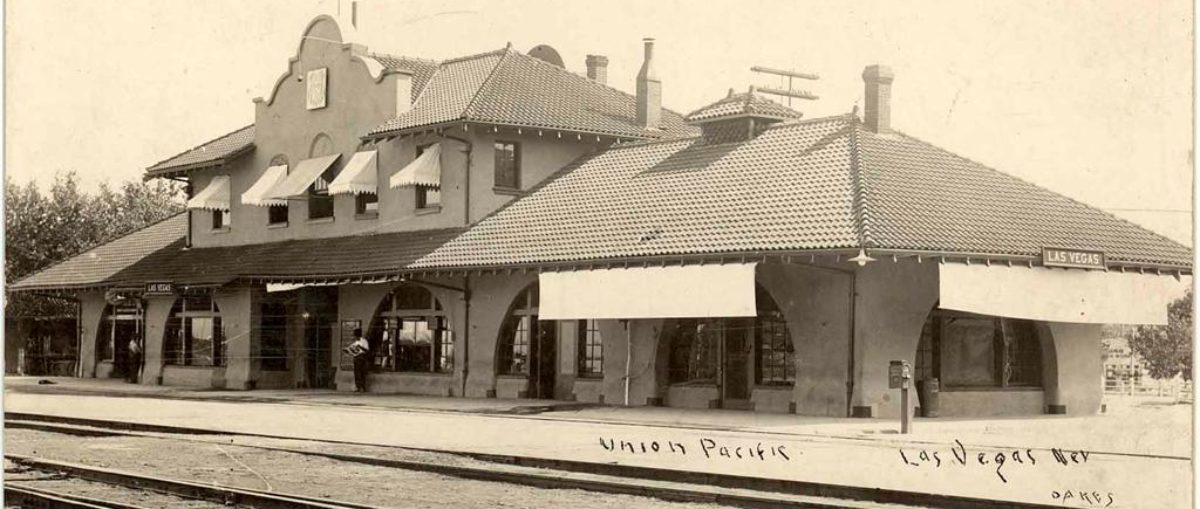
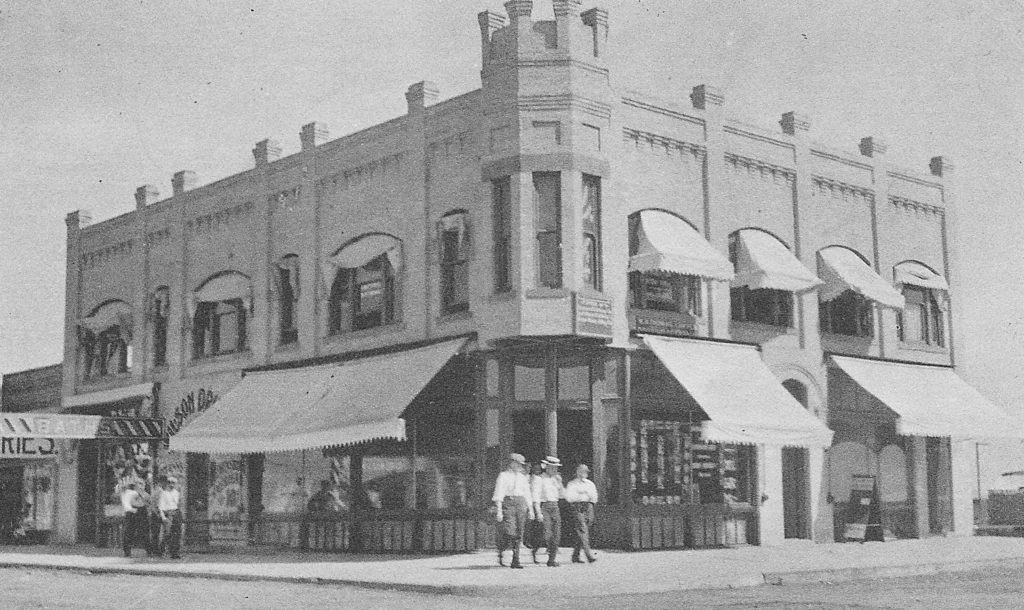
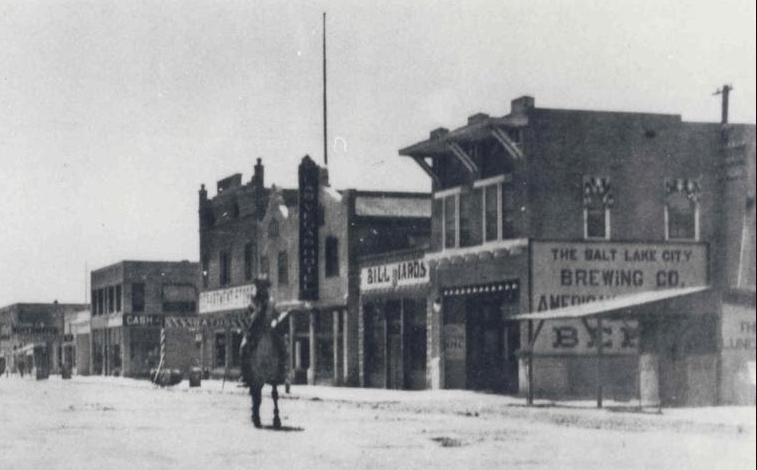
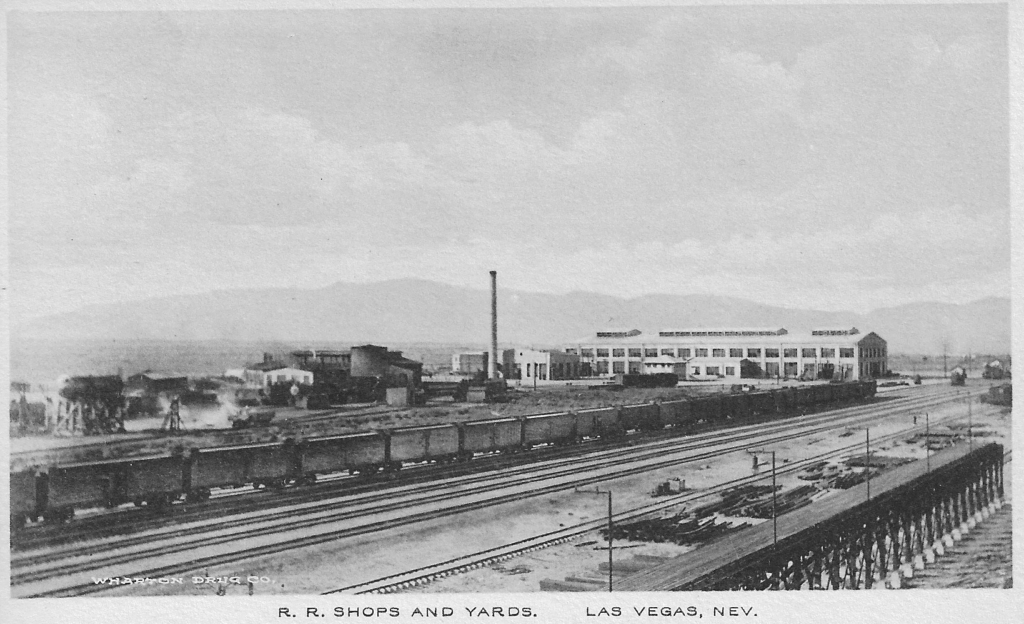
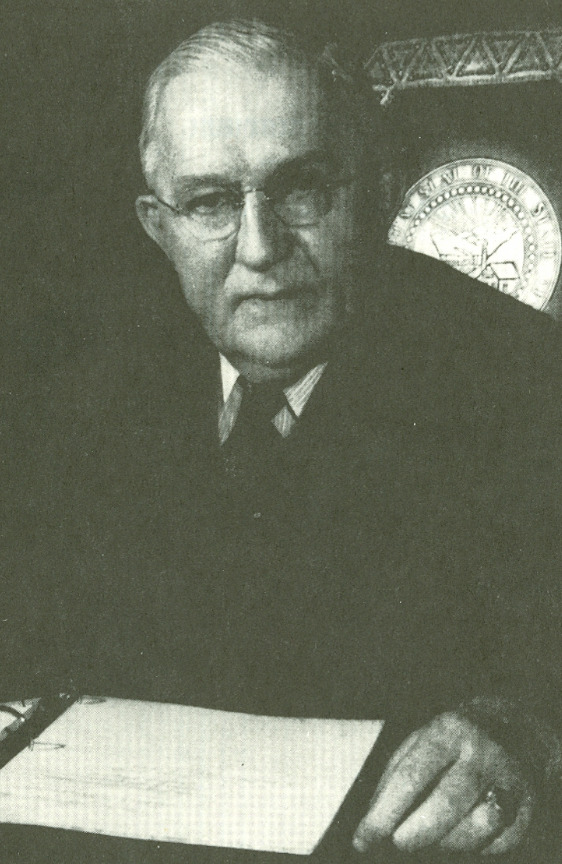 In May of 1916, Clark County District Court Judge Charles Lee Horsey convened a grand jury with specific instructions to look into vice and law enforcement in Las Vegas. Arthur Jerry Stebenne
In May of 1916, Clark County District Court Judge Charles Lee Horsey convened a grand jury with specific instructions to look into vice and law enforcement in Las Vegas. Arthur Jerry Stebenne
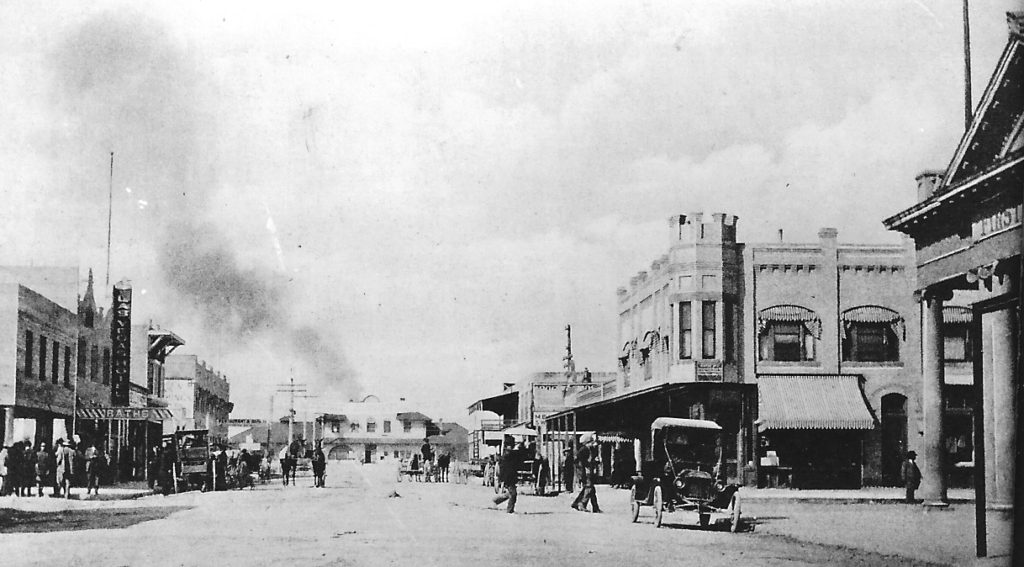

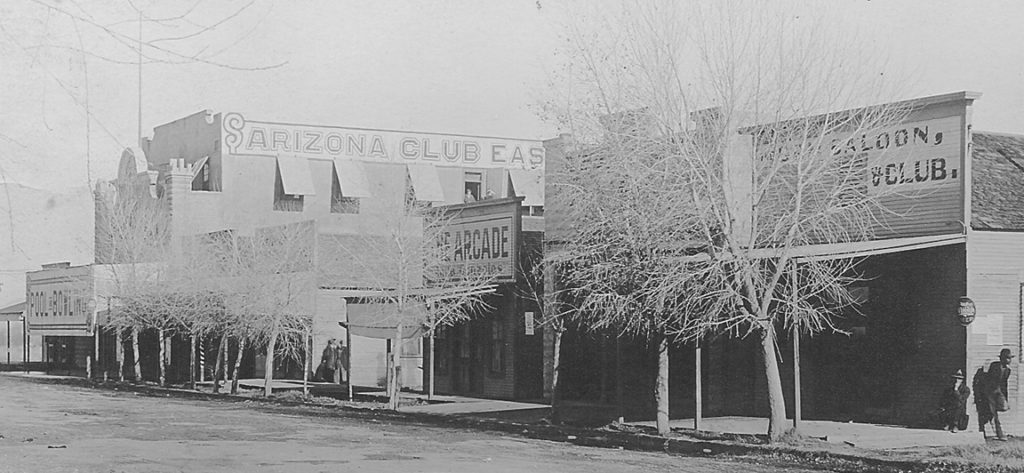 Saloons were located along Block 16 with the two-story Arizona Club leading the pack. Author’s collection.
Saloons were located along Block 16 with the two-story Arizona Club leading the pack. Author’s collection.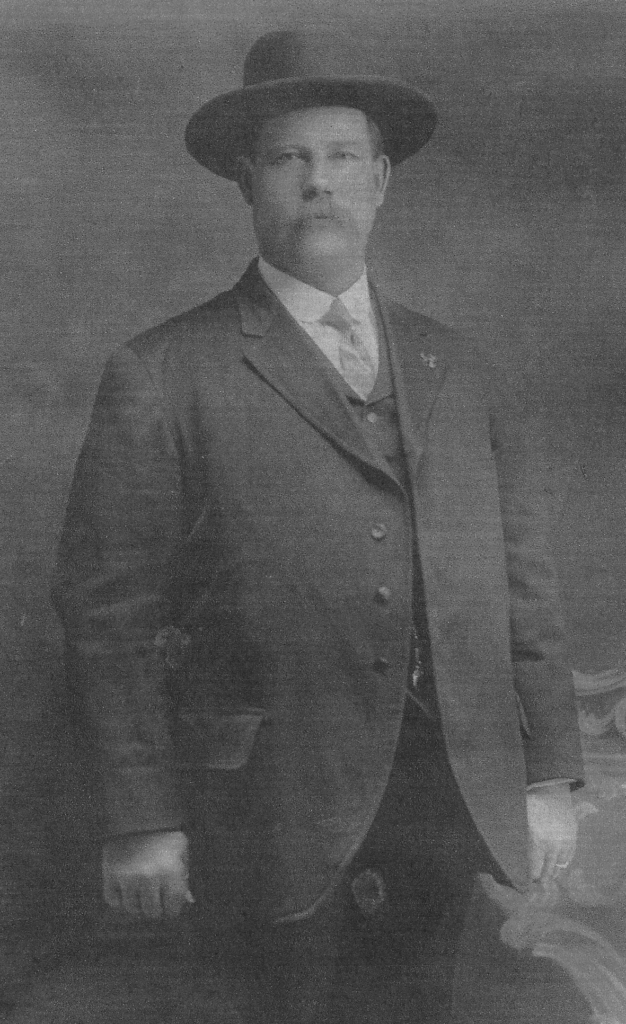 his is your first and last notice from me. Your next notice will be a warrant of arrest.”
his is your first and last notice from me. Your next notice will be a warrant of arrest.” 
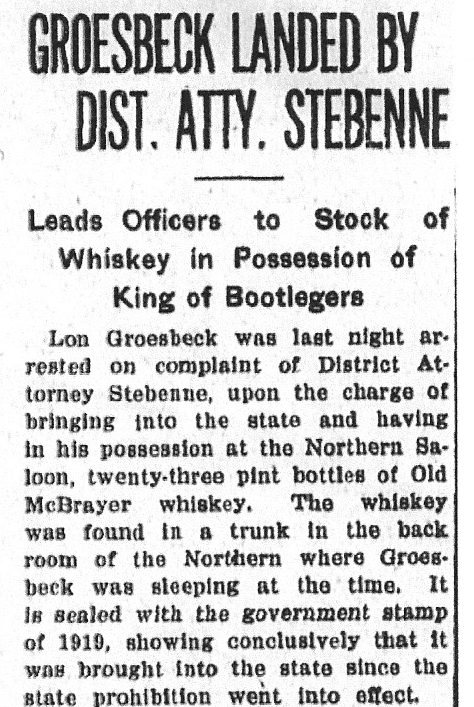

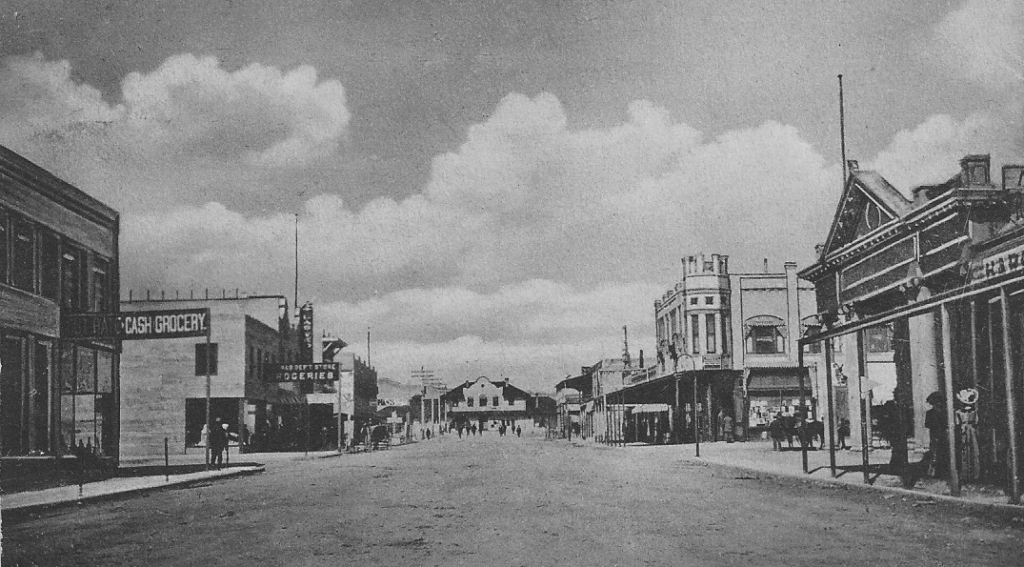
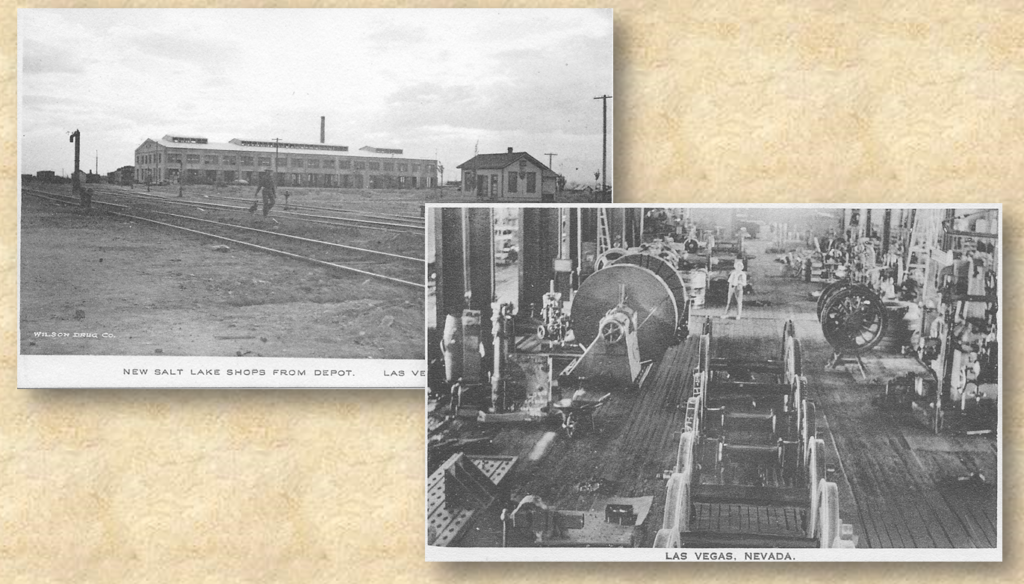
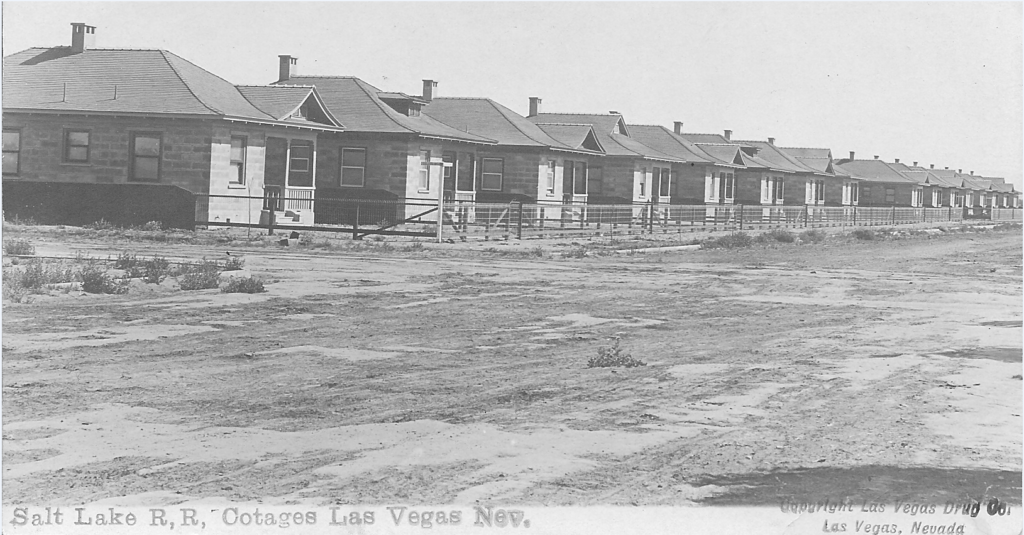
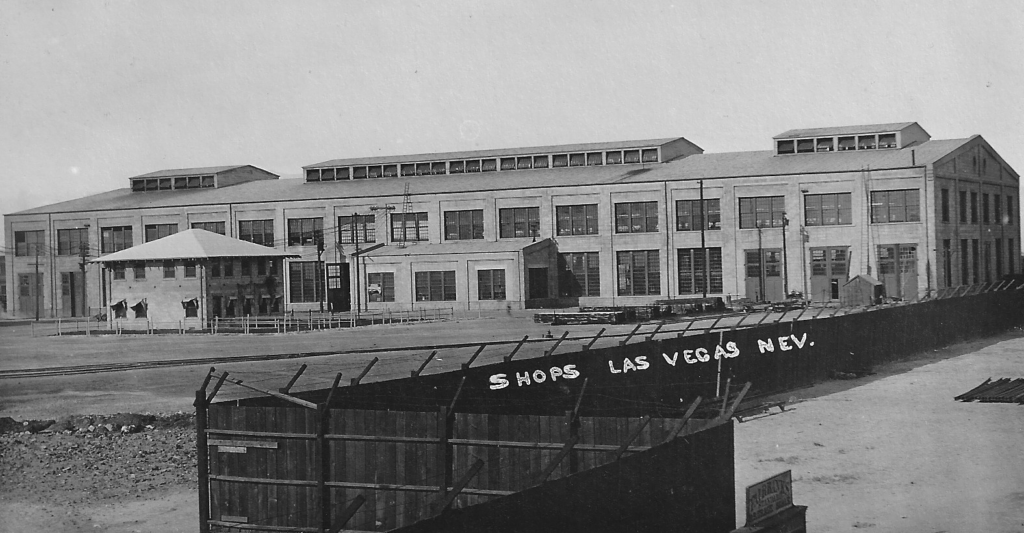
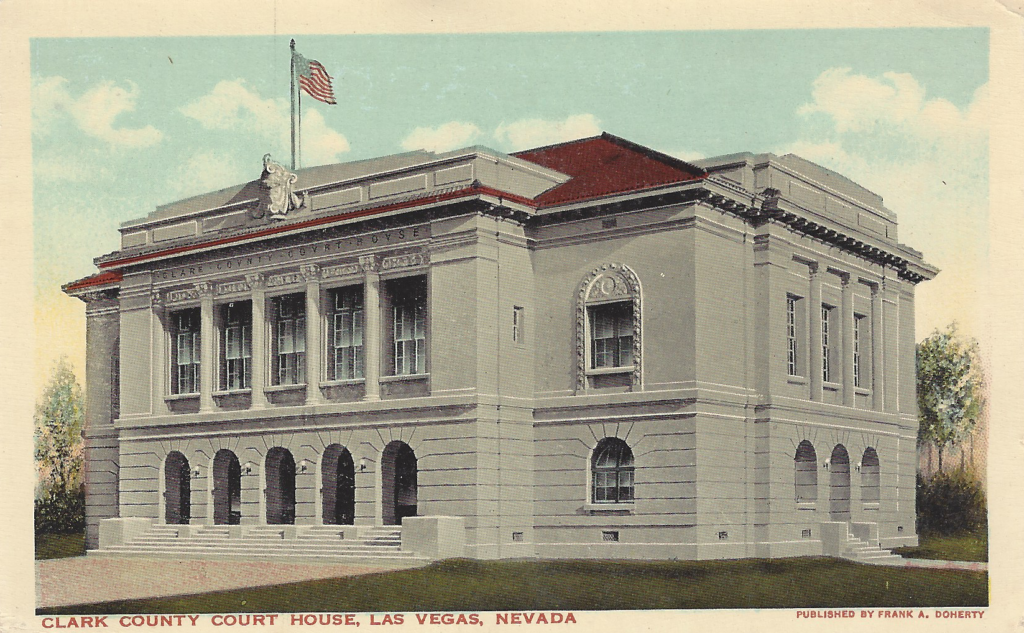

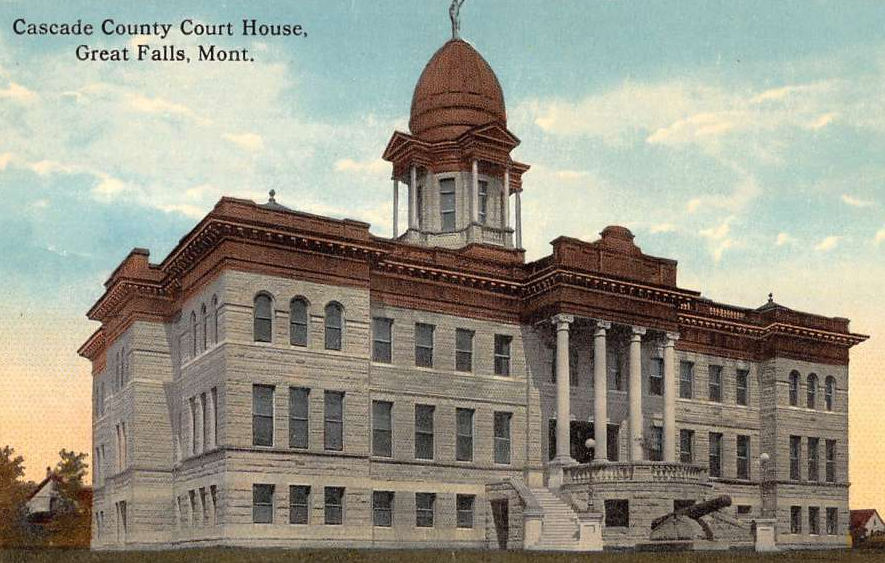
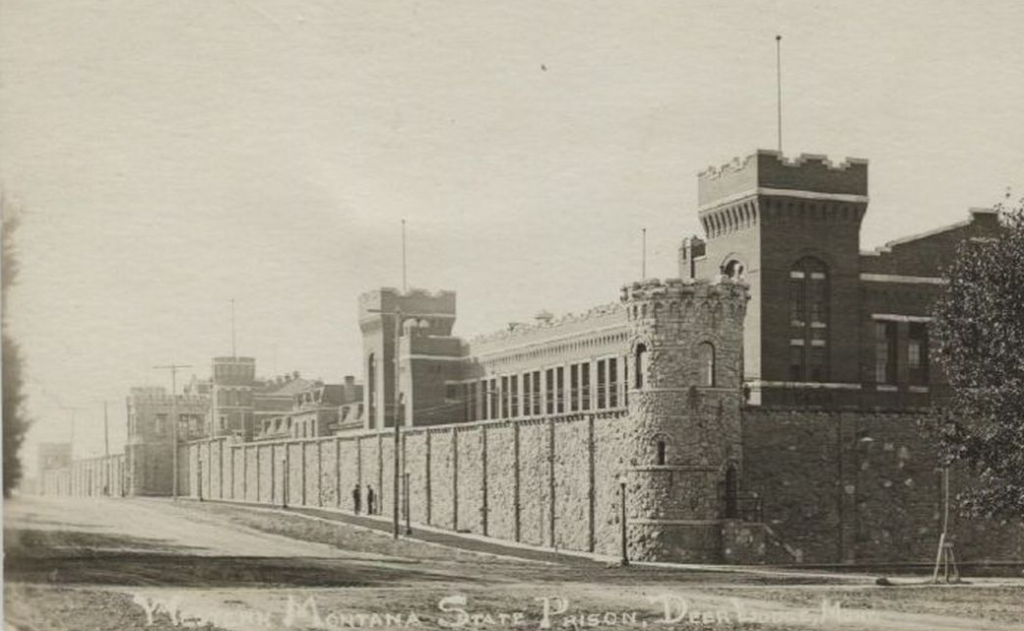
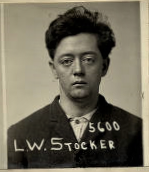
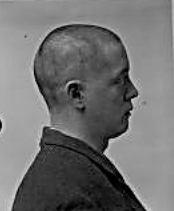

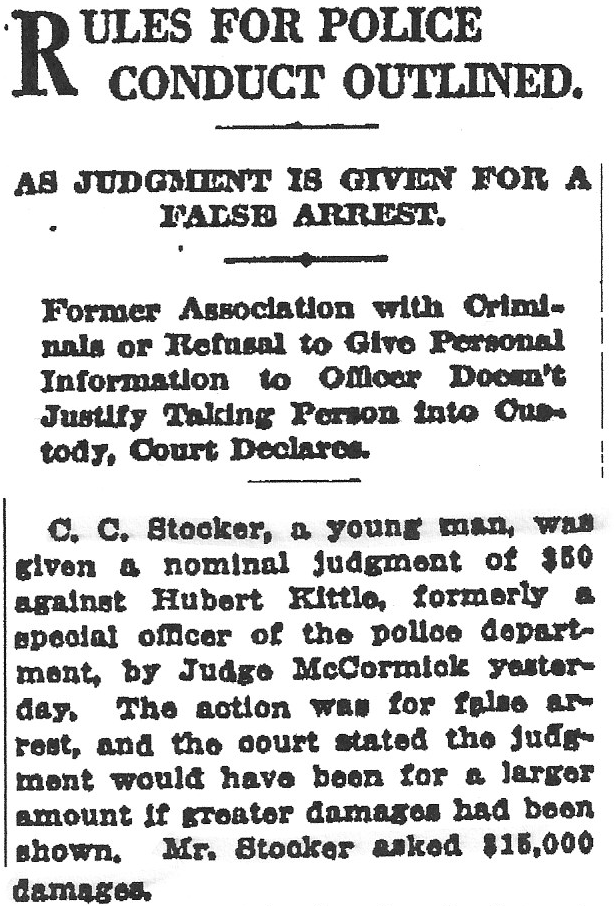 Los Angeles Times April 10, 1917
Los Angeles Times April 10, 1917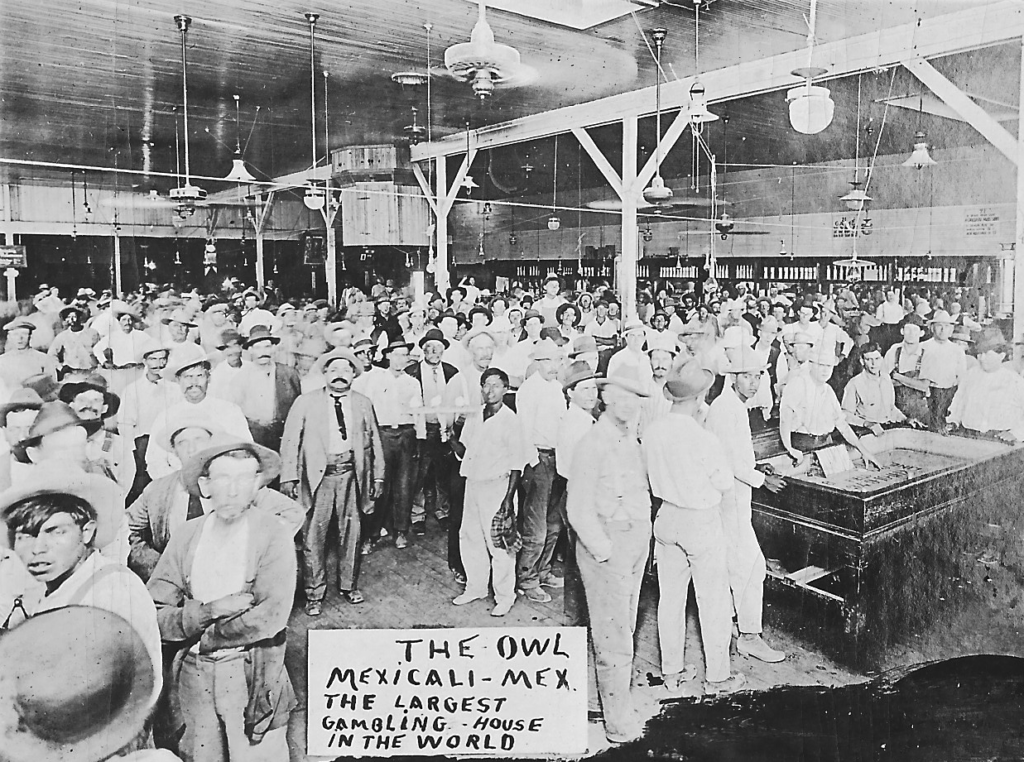
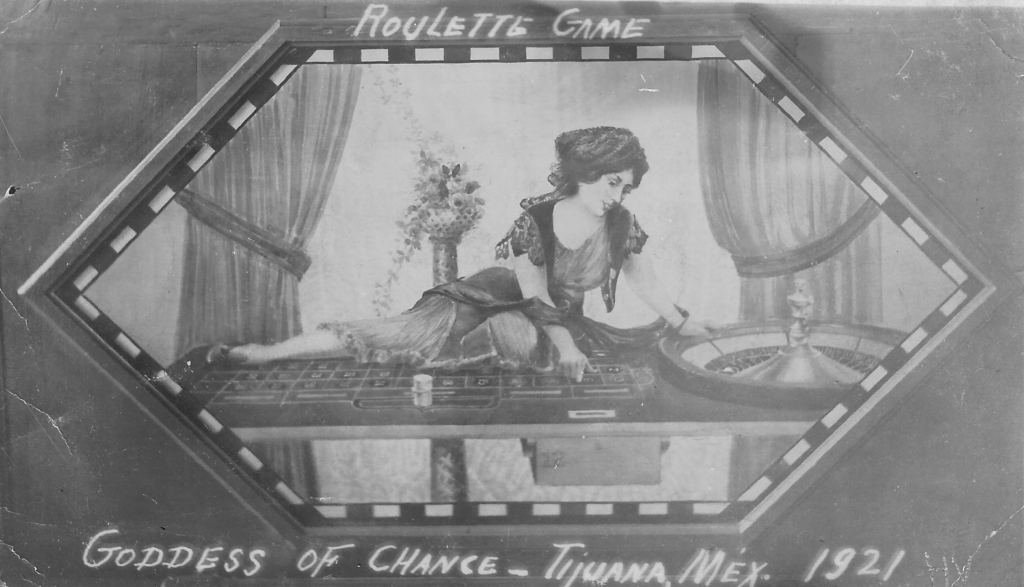
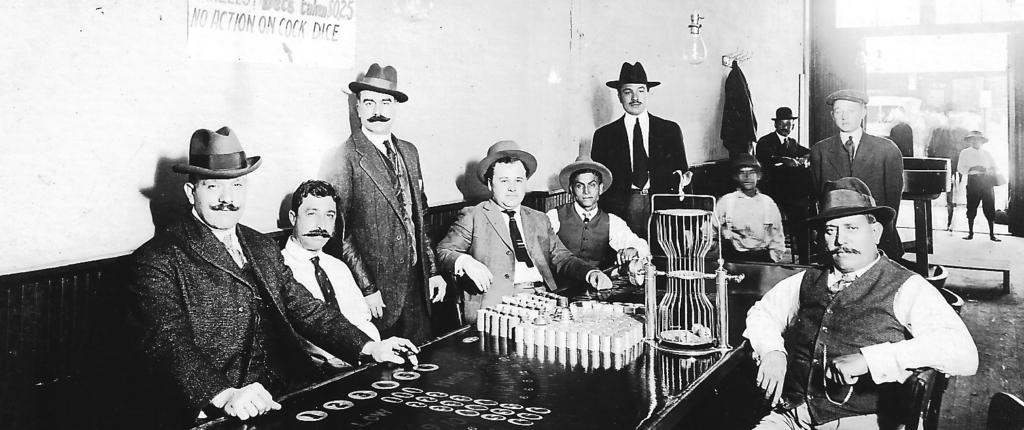

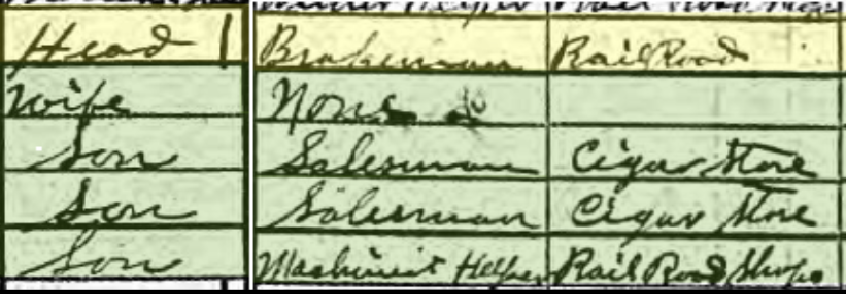
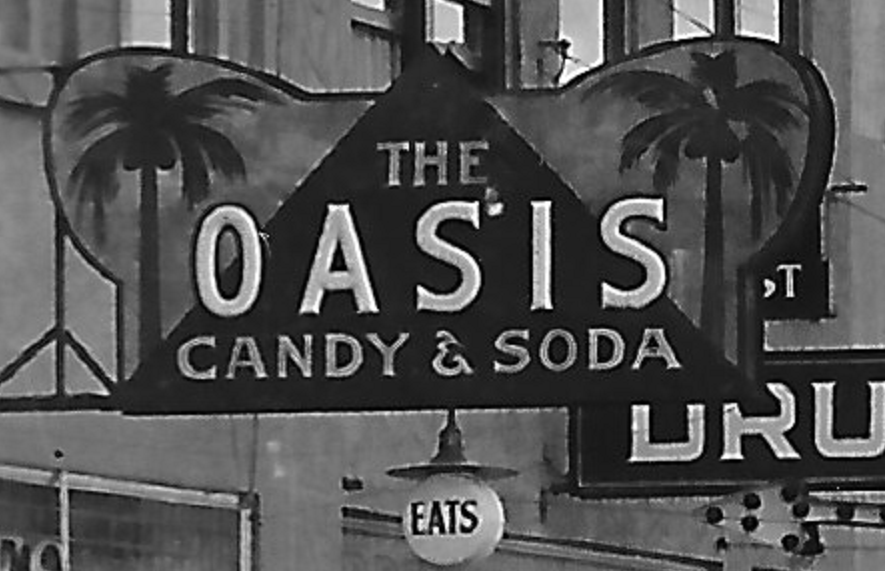
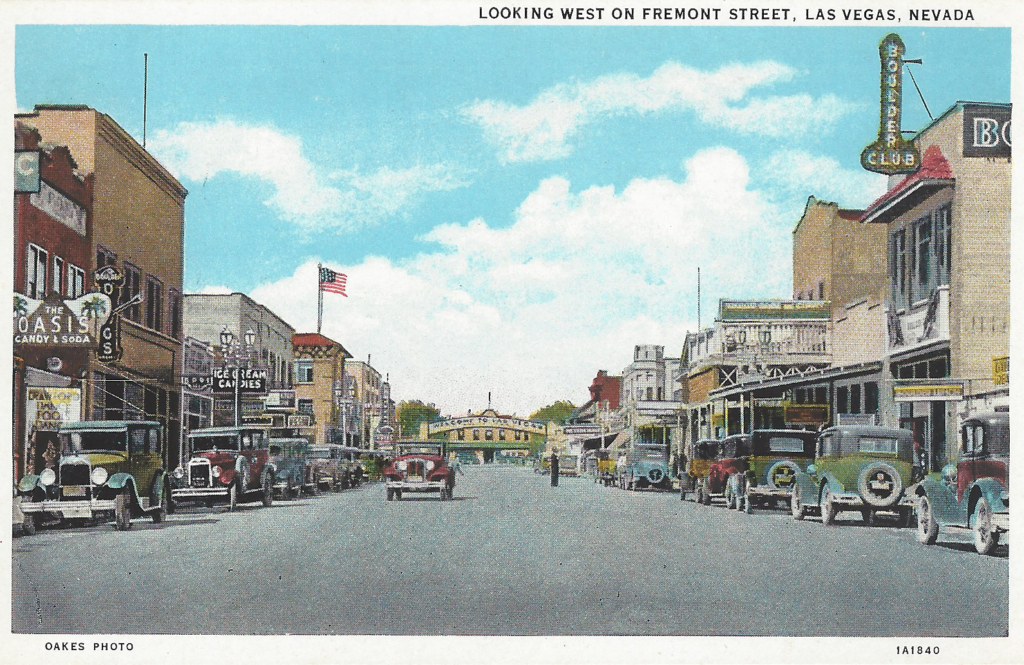
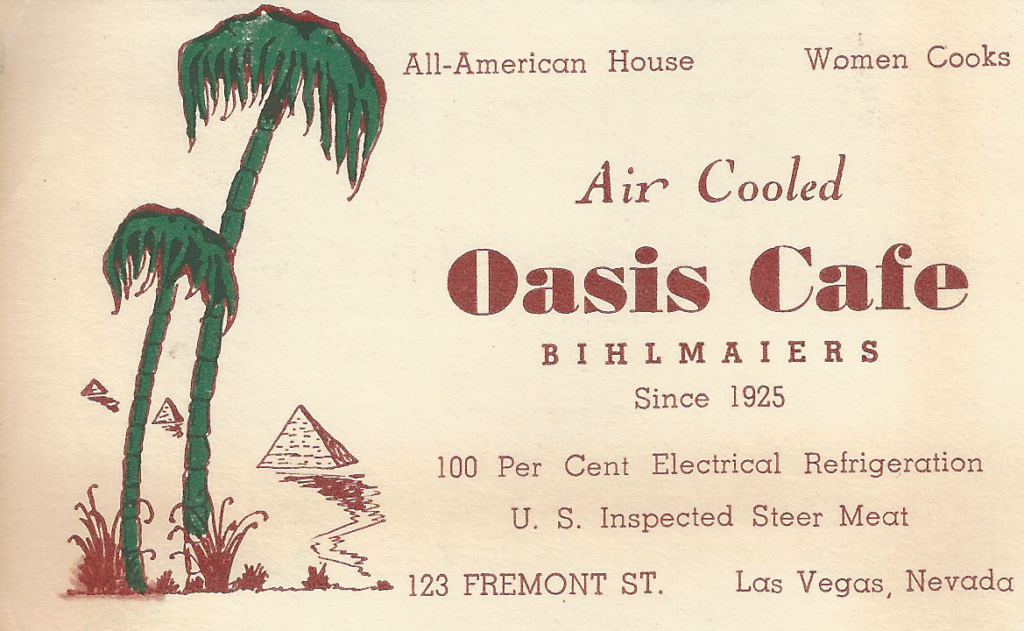 Oasis Cafe Business card.
Oasis Cafe Business card.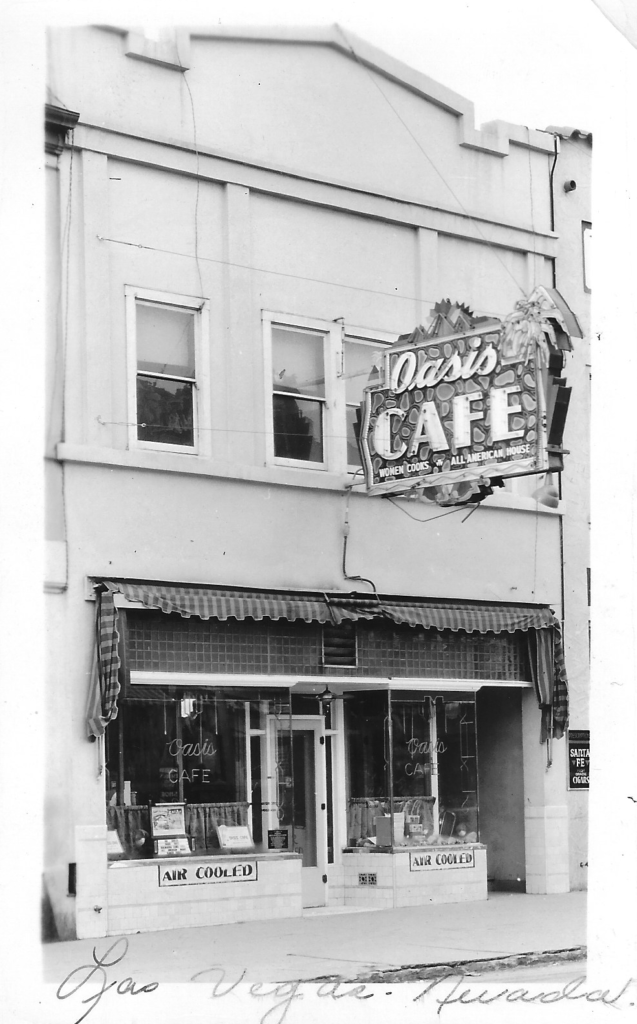 Early 1930’s Post Card.
Early 1930’s Post Card.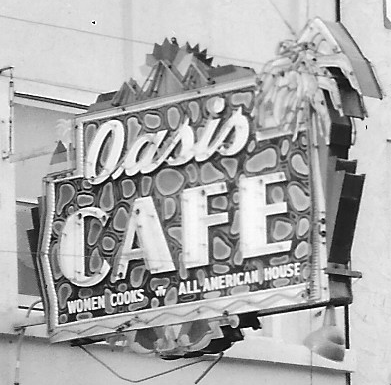
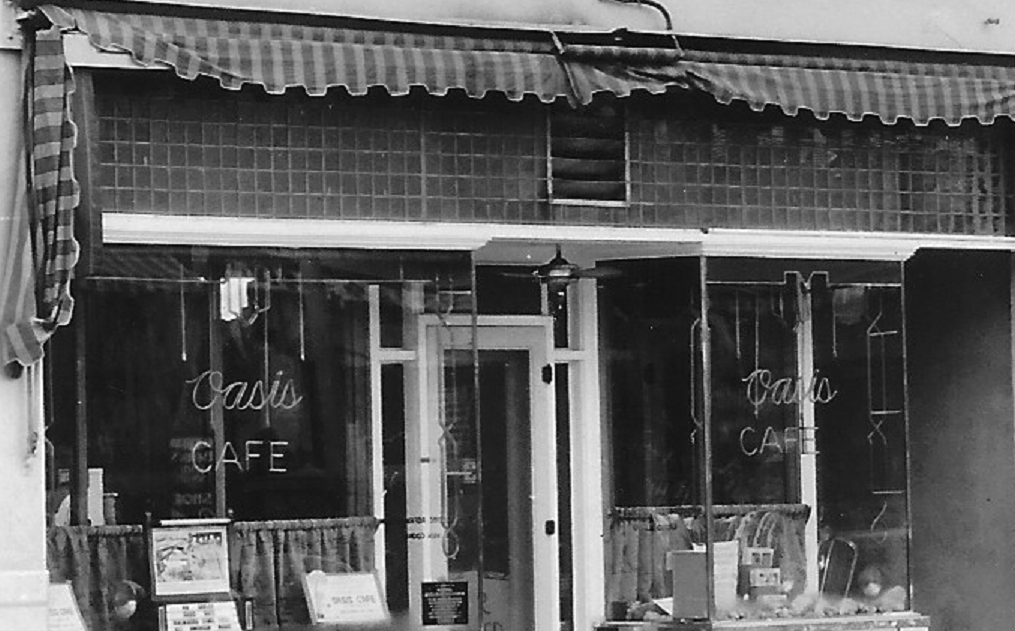

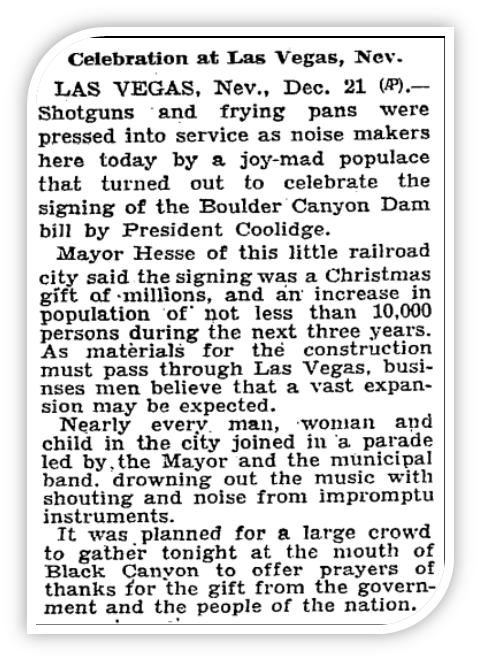
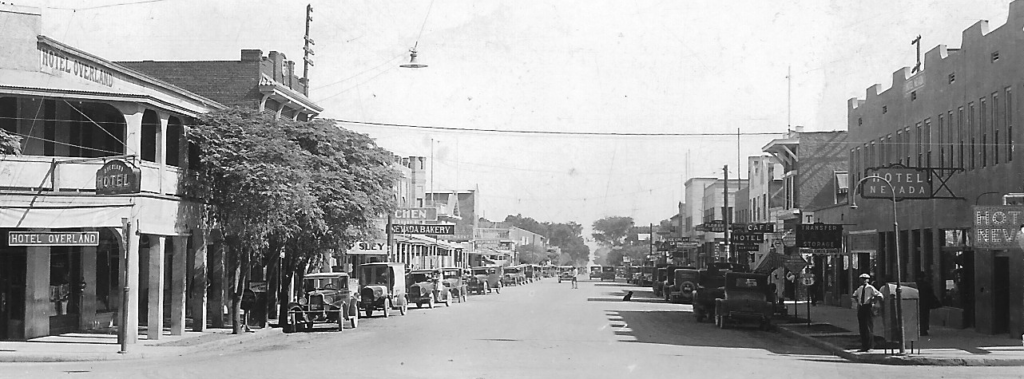
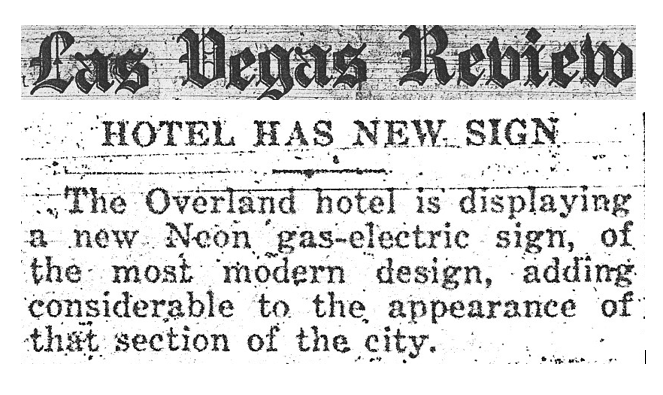
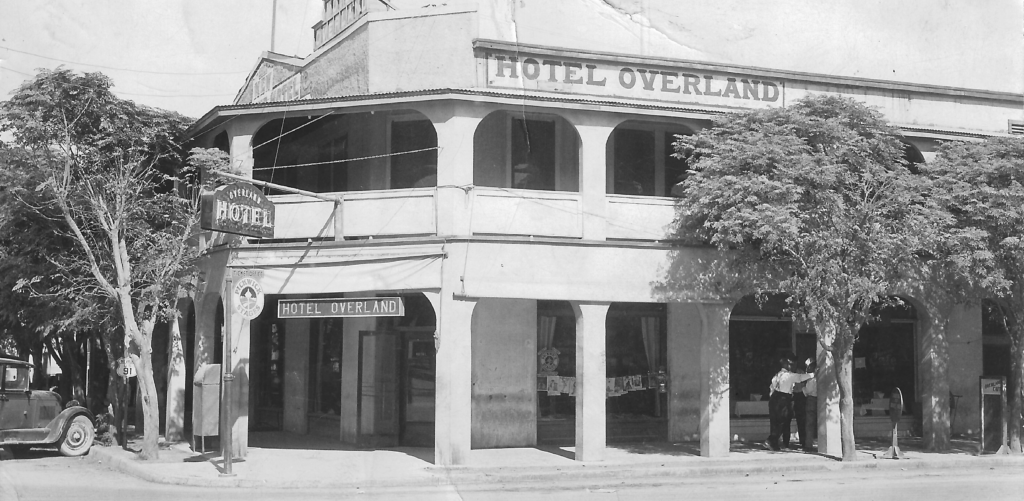
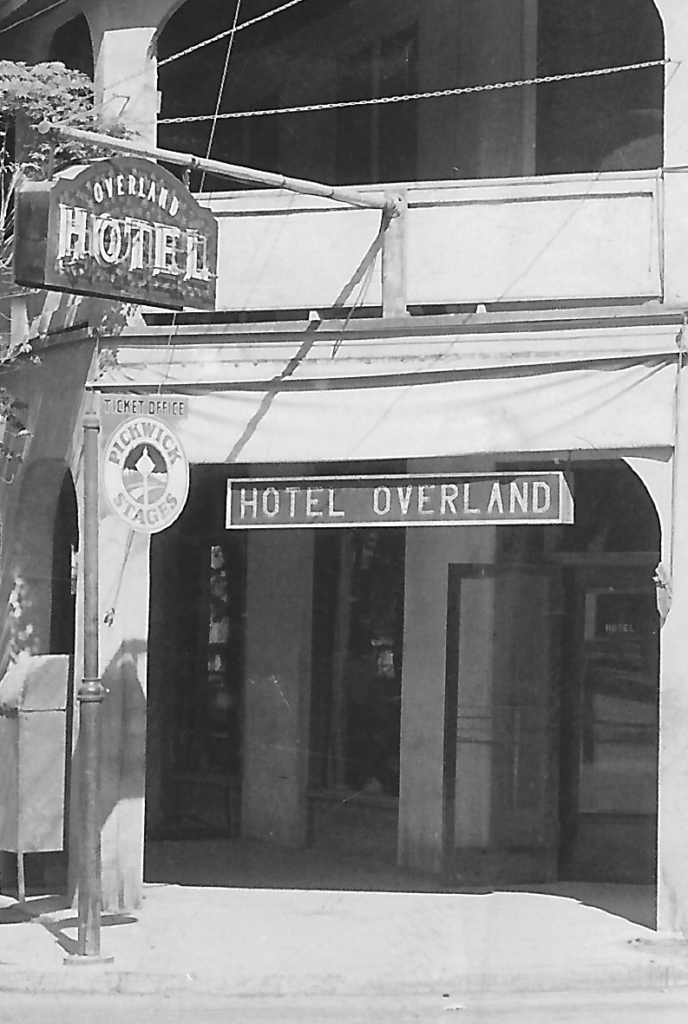
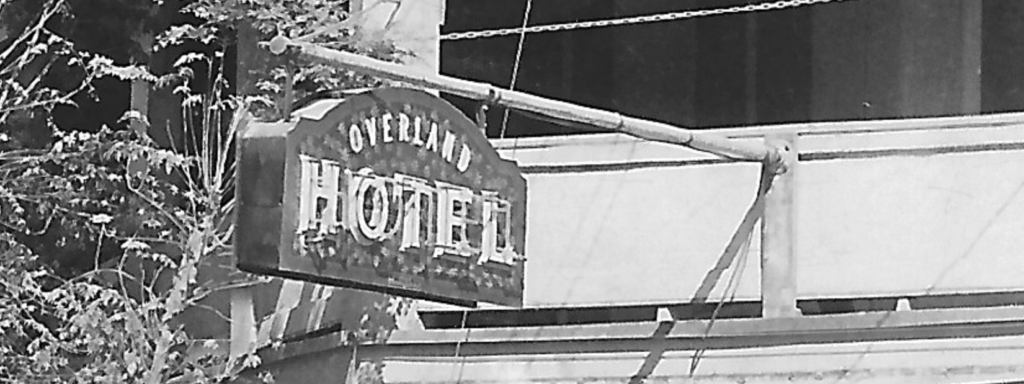
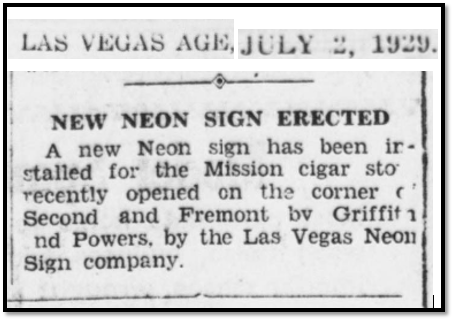
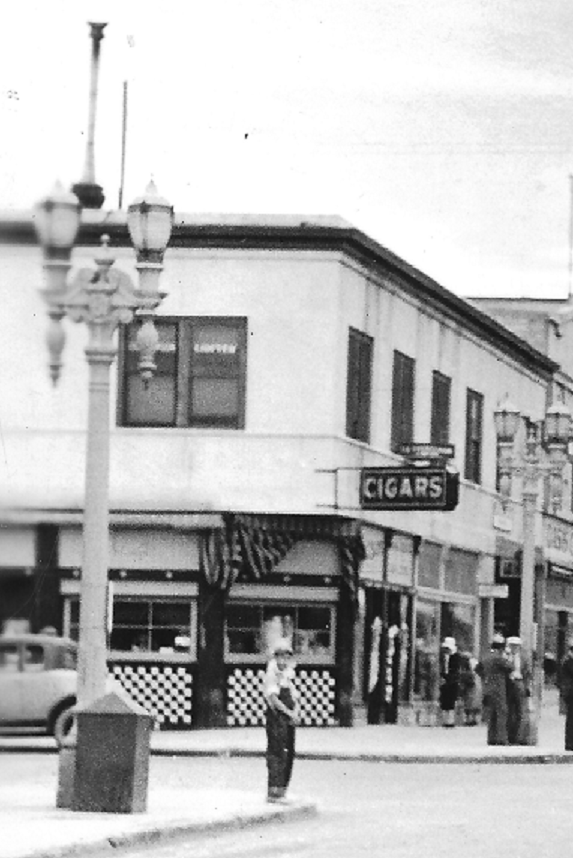
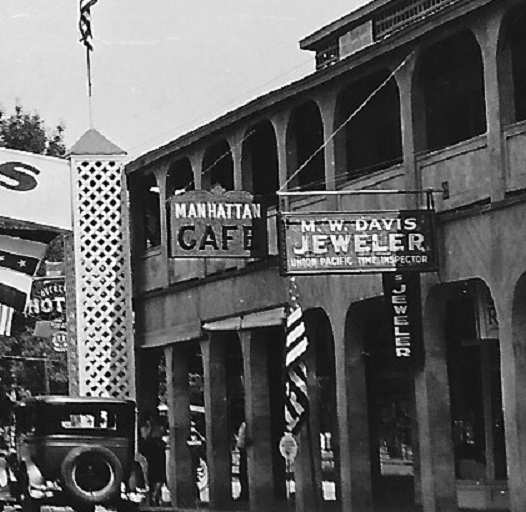
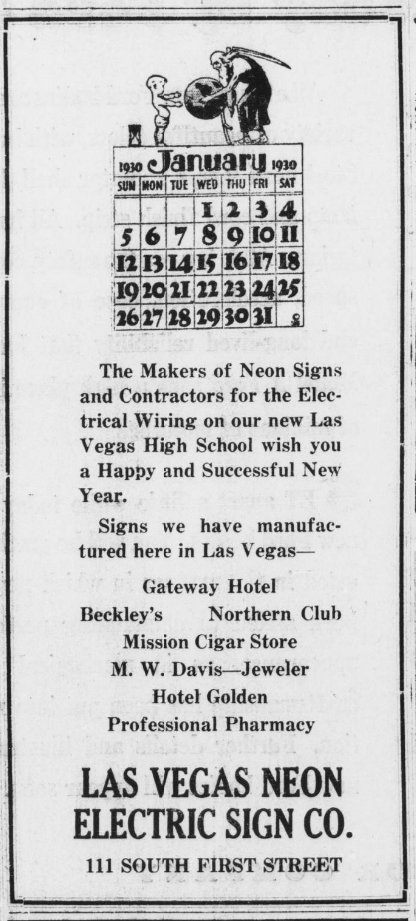

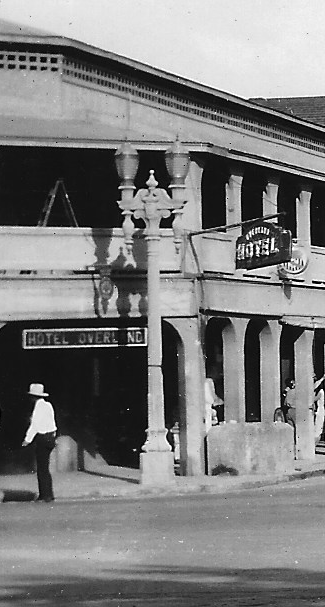
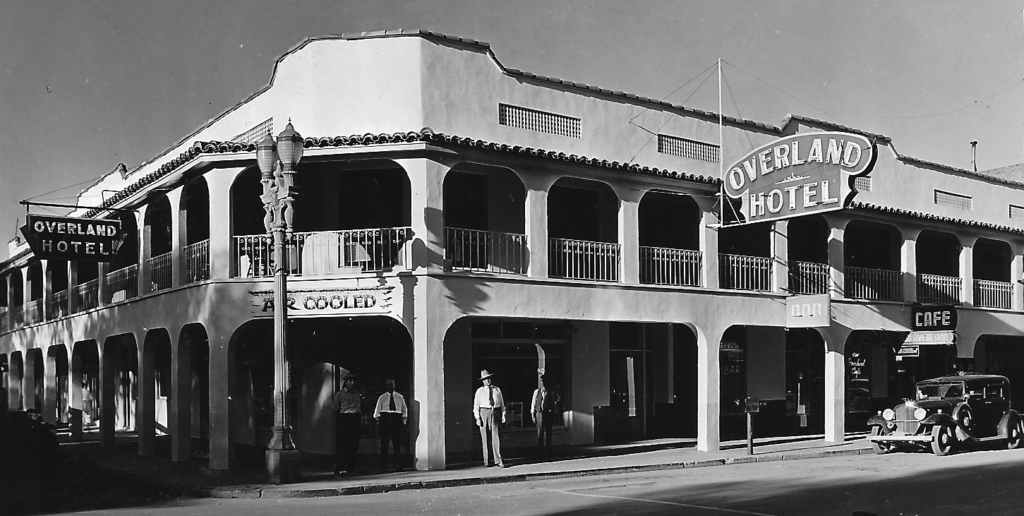

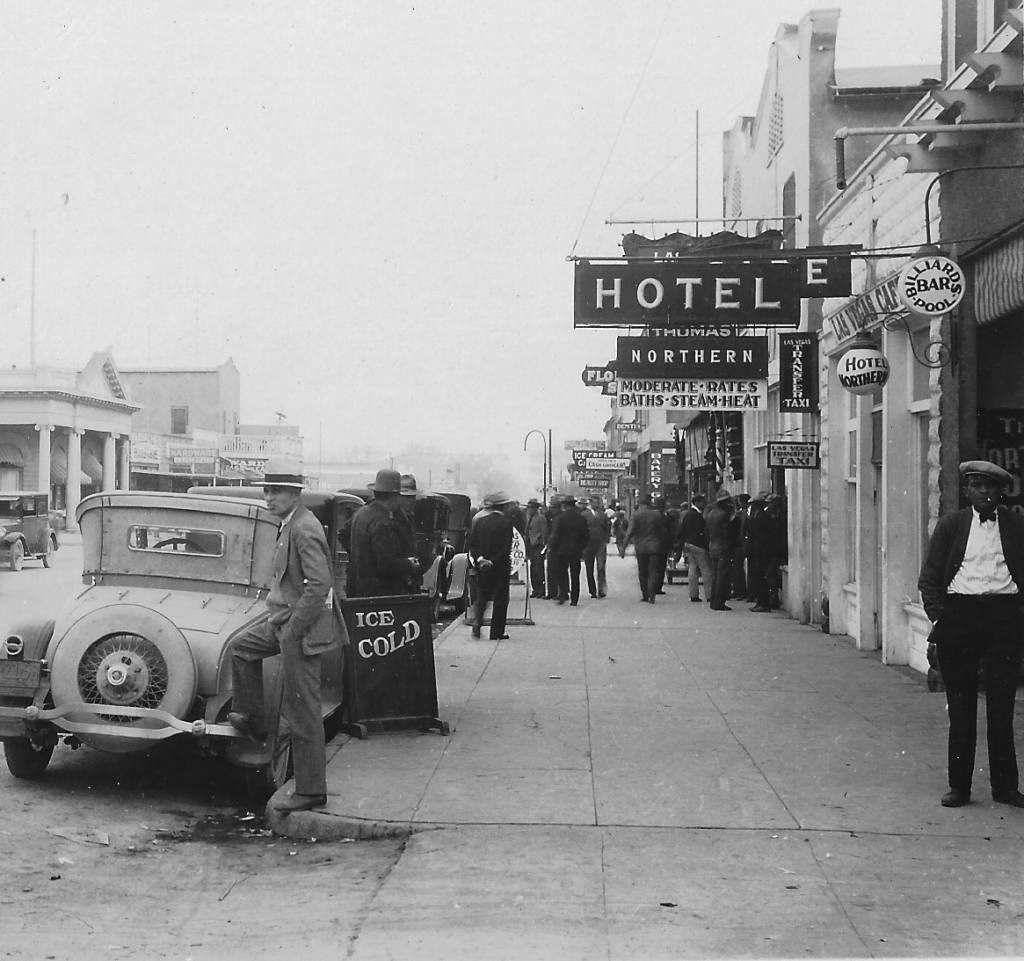
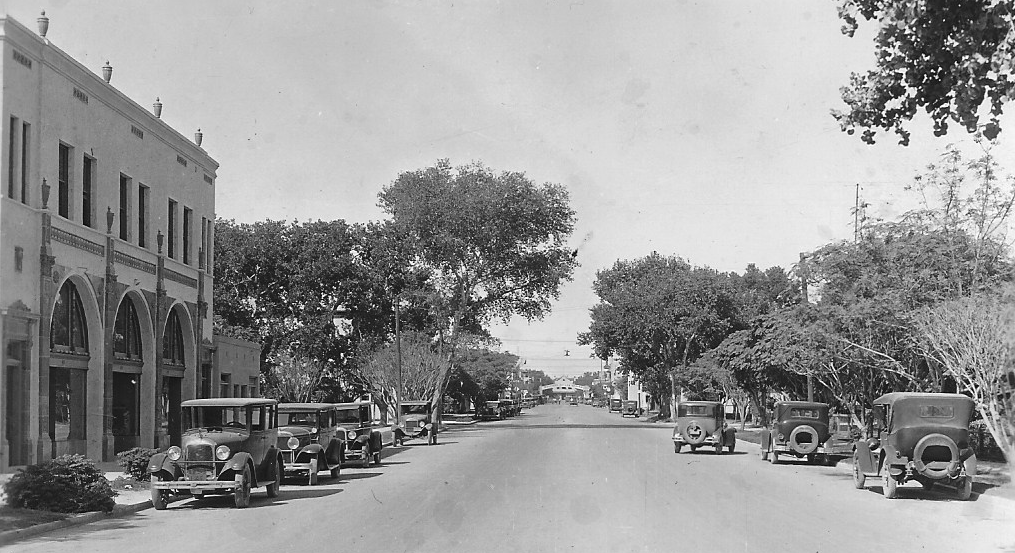
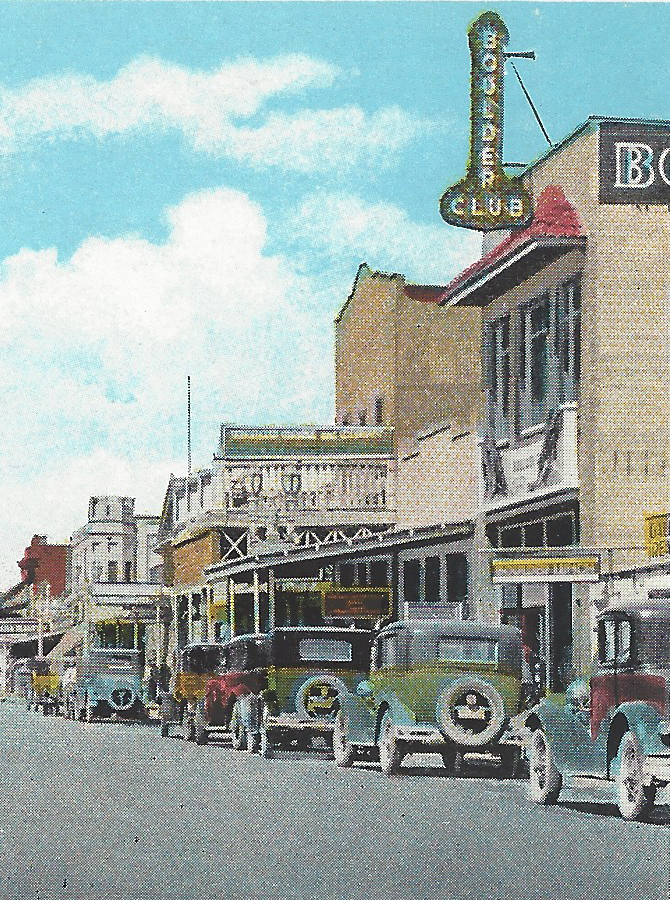
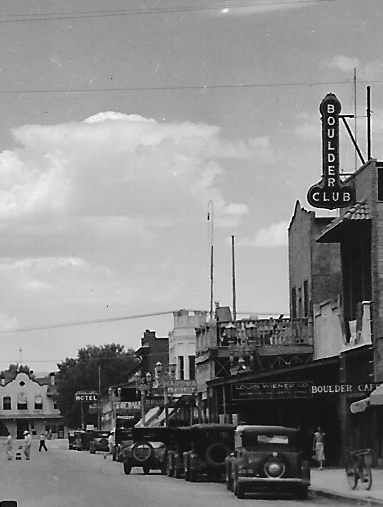
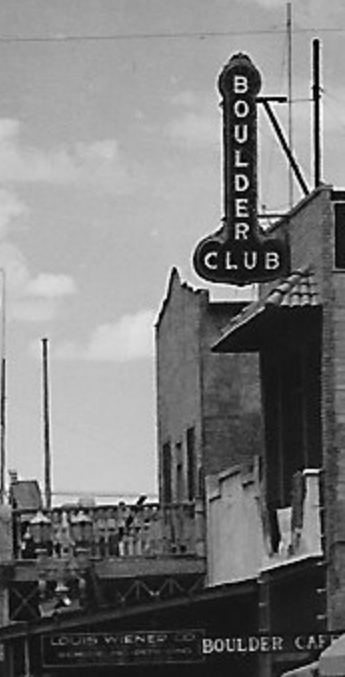
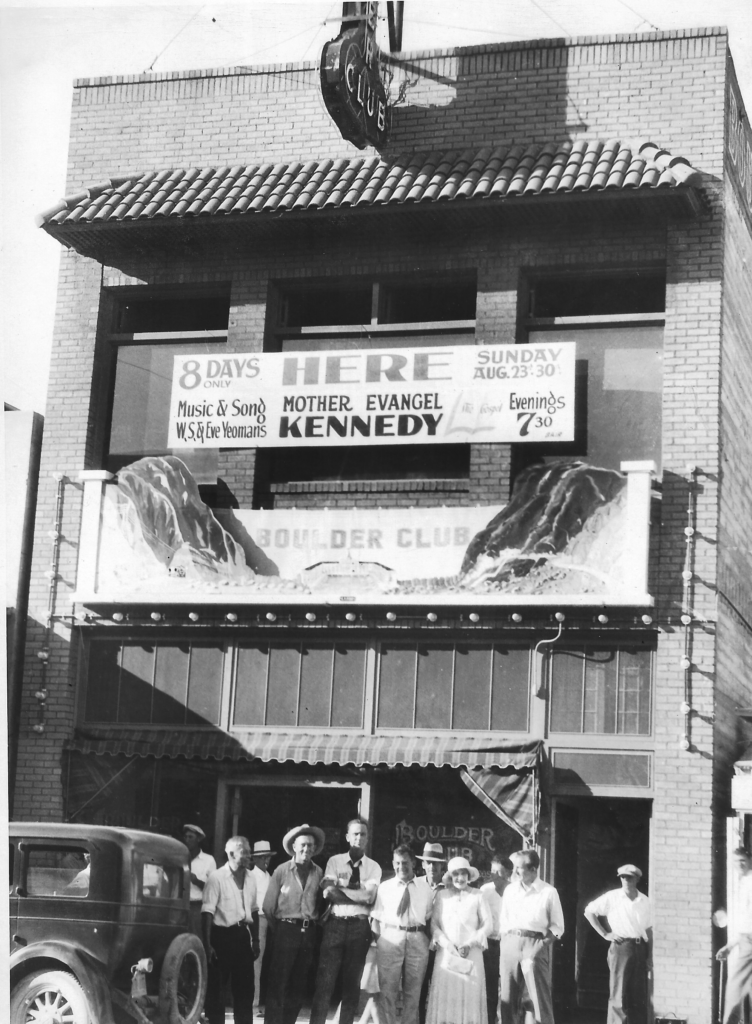
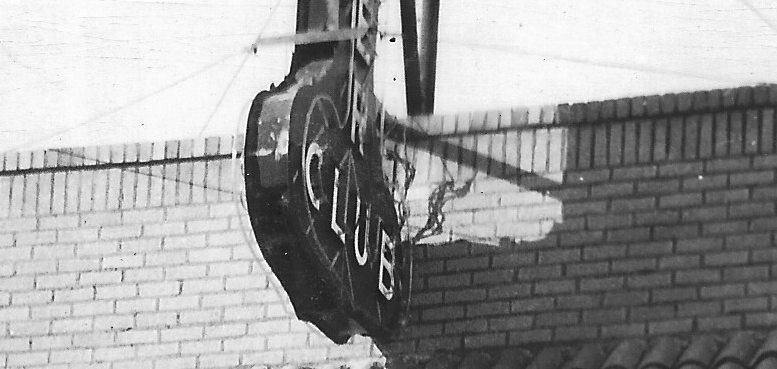 As the Bruce Brothers were assembling and installing the Boulder Club sign, Barrett’s Las Vegas Neon Electric Sign Company had secured a contract from the Northern Club.
As the Bruce Brothers were assembling and installing the Boulder Club sign, Barrett’s Las Vegas Neon Electric Sign Company had secured a contract from the Northern Club.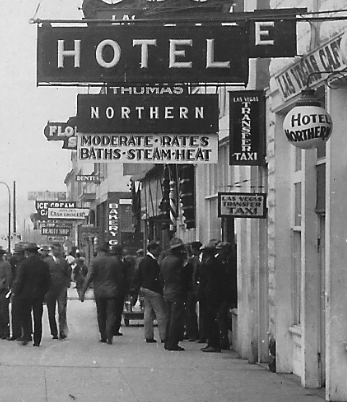
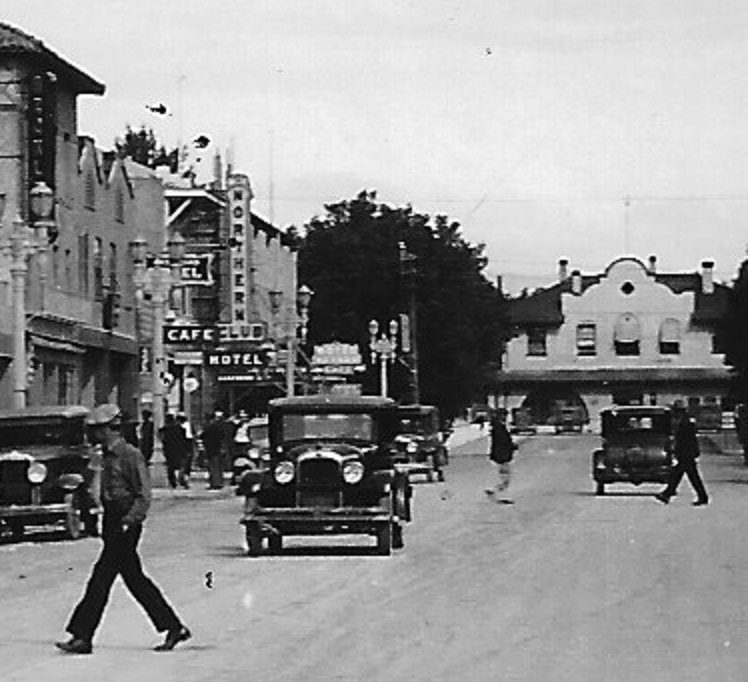
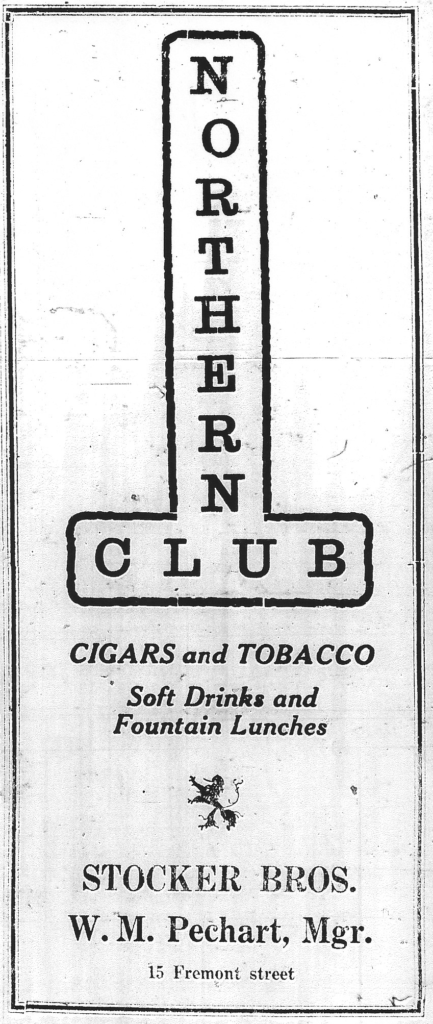
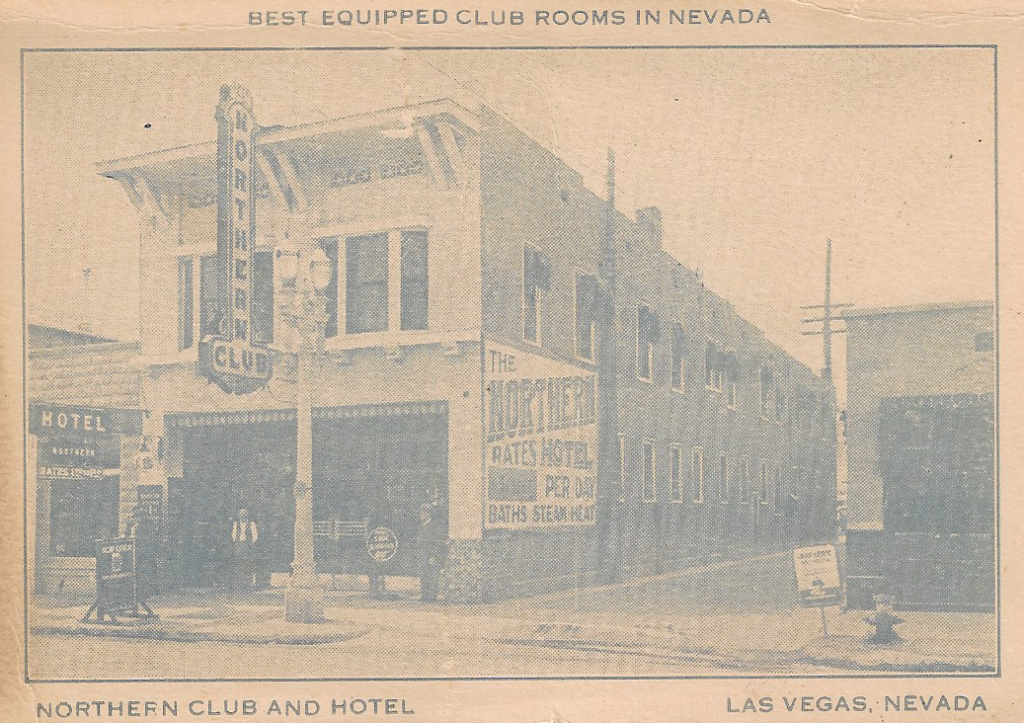
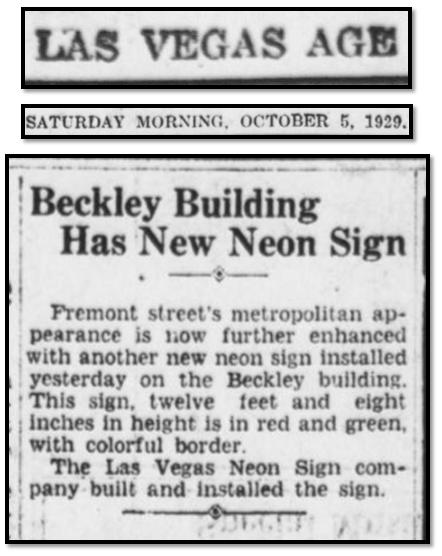
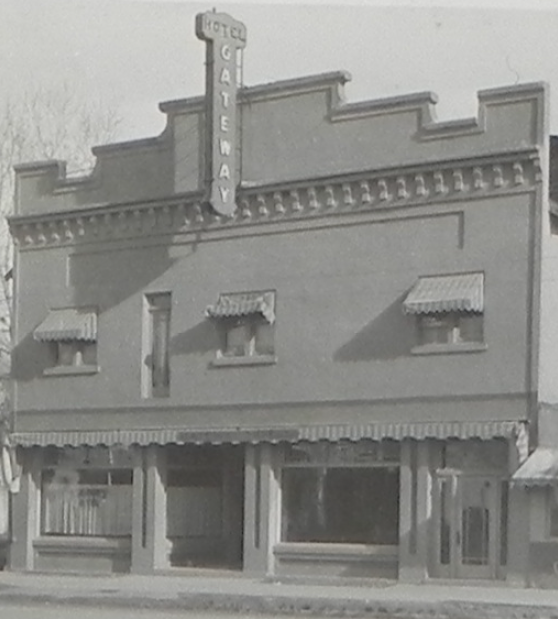


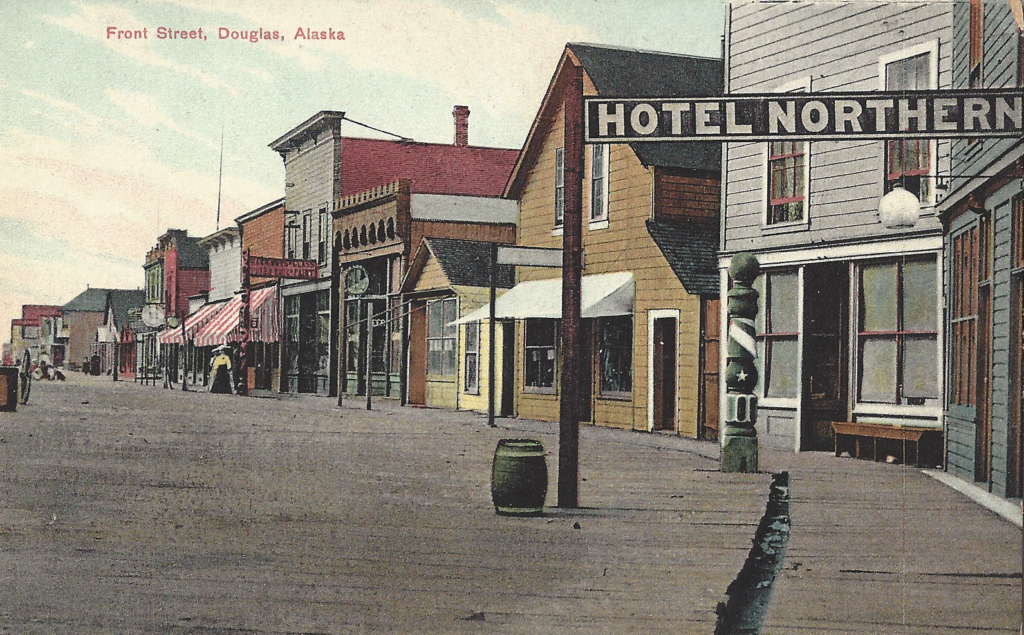 Whether it was a hotel, or a saloon, no self-respecting Nevada mining camp or community was without a “Northern.”
Whether it was a hotel, or a saloon, no self-respecting Nevada mining camp or community was without a “Northern.”
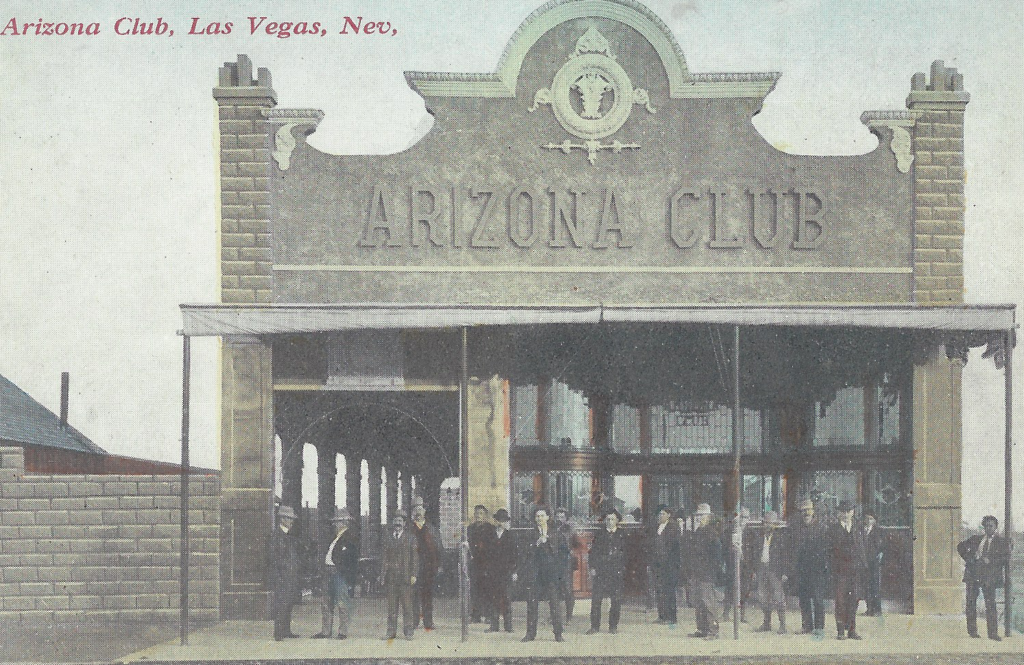 Author’s collection
Author’s collection
 Author’s collection
Author’s collection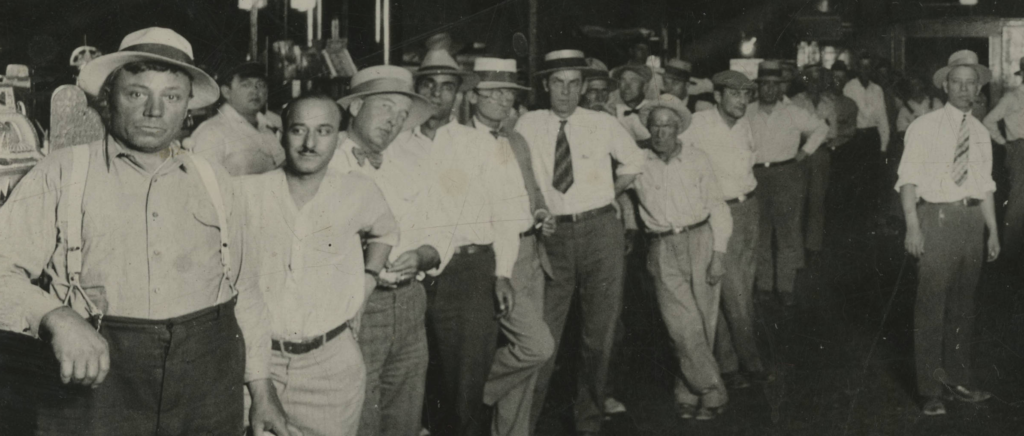
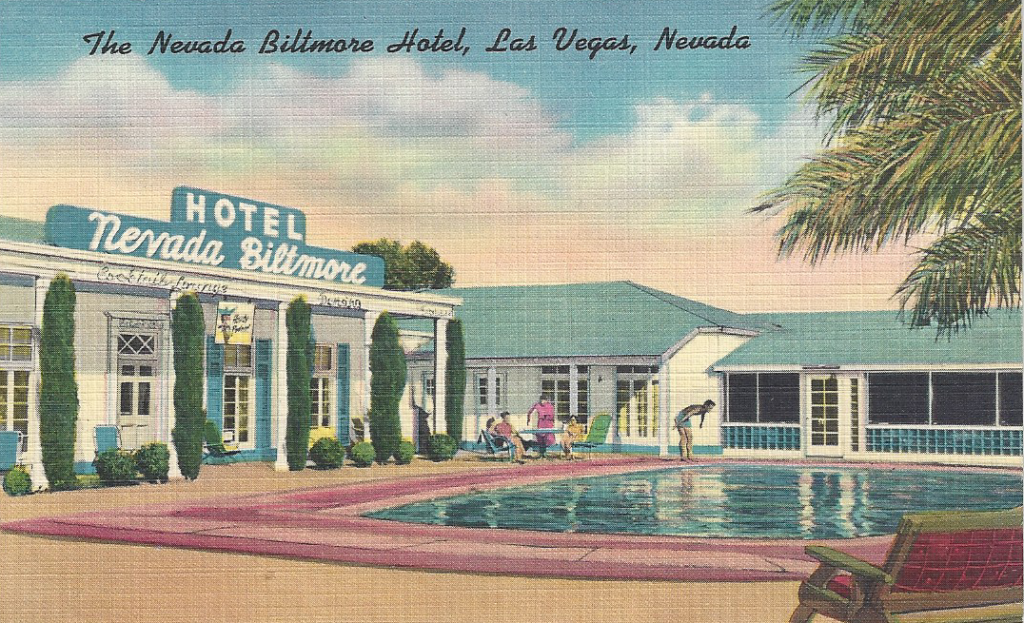
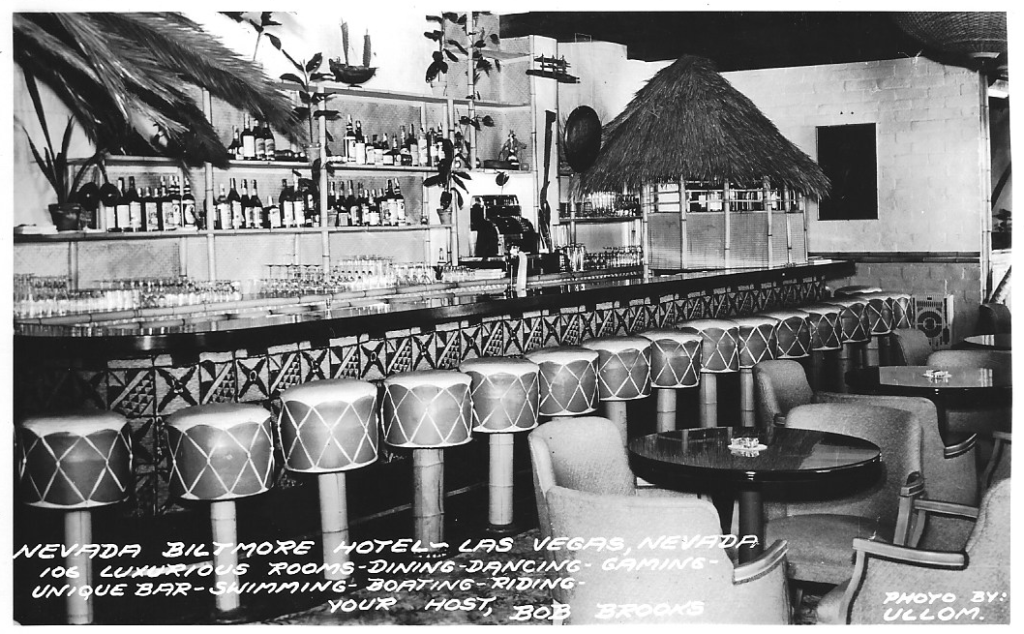
 The pool was visible from the from the intersection Main and Bonanza Streets, which was also where two U.S. Highways, U.S. 91 and 95 connected. A popular place for locals. As a child, U.S. Senator Richard Bryan learned to swim in this pool.
The pool was visible from the from the intersection Main and Bonanza Streets, which was also where two U.S. Highways, U.S. 91 and 95 connected. A popular place for locals. As a child, U.S. Senator Richard Bryan learned to swim in this pool.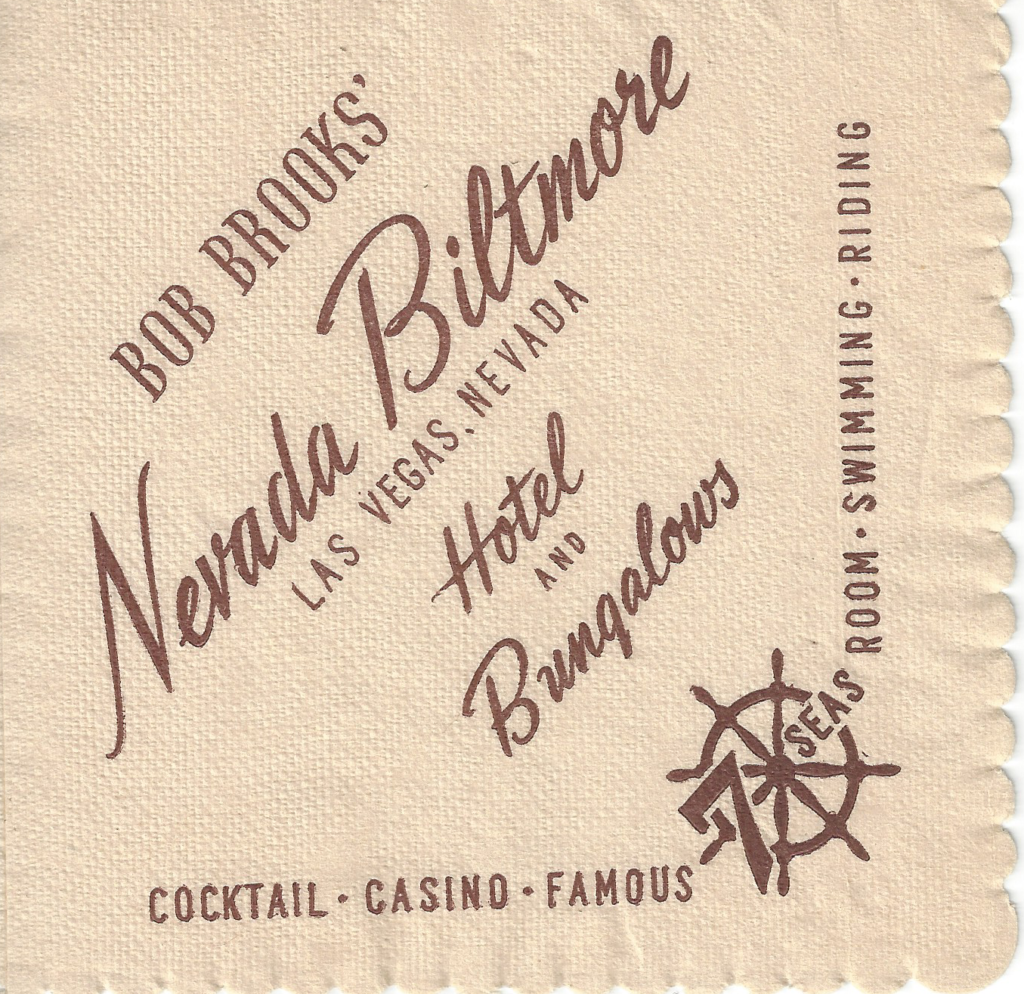
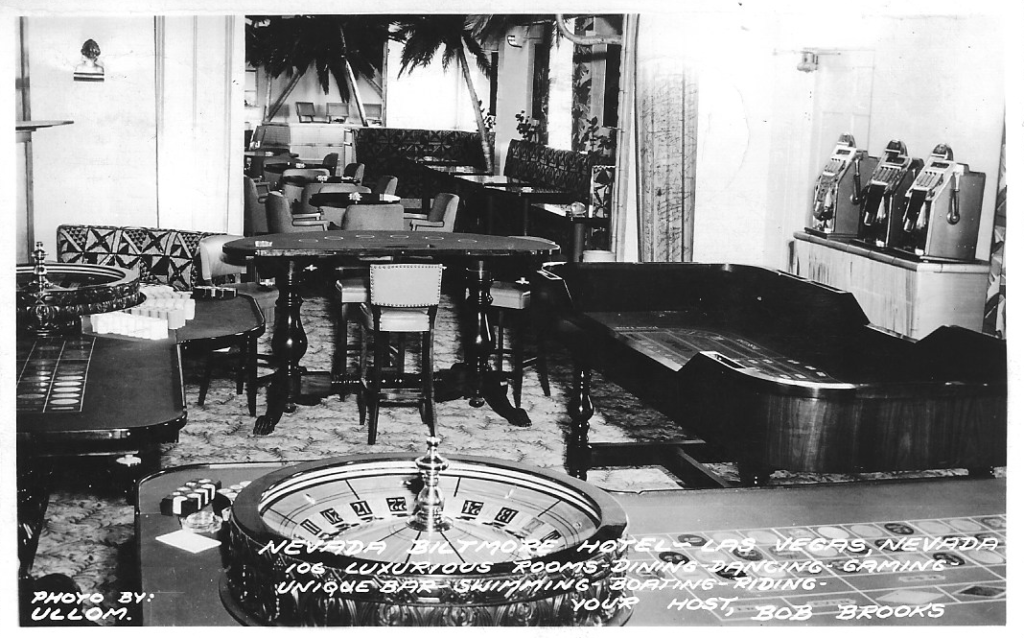
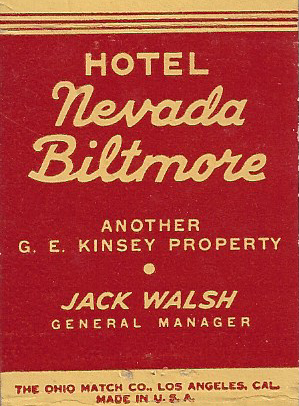
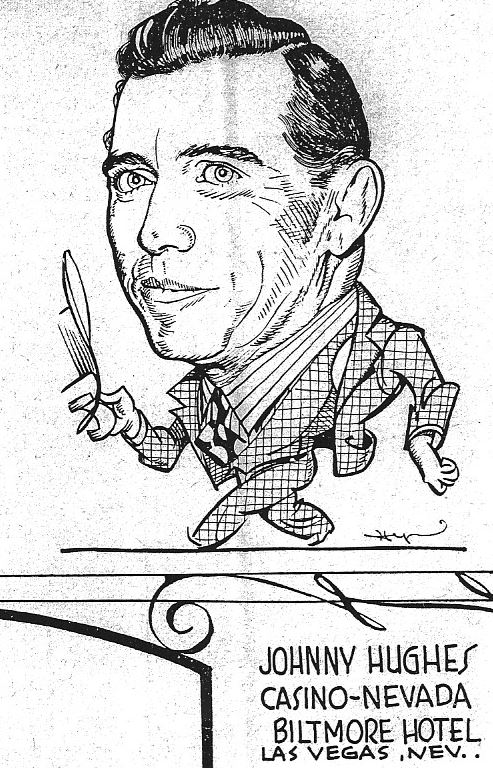

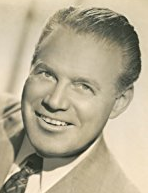
 He billed himself as “known from coast to coast” and “your host from coast to coast.”
He billed himself as “known from coast to coast” and “your host from coast to coast.”